Packaging and labels
Ensuring that the company brand was always highlighted and that the gloves which had been carefully made travelled undamaged, packaging and labelling were always an important part of the company's focus.
Glove sleeves
Carefully produced gloves required good quality and sturdy packaging so that they arrived with their wearer in perfect condition. From the early days each pair of gloves were sewn together at the cuff and were dispatched in glove sleeves originally in paper and packed in boxes of a dozen pairs. They also provided a vehicle for the company's advertising slogans Which are printed in their various incarnations on the gloves. These included:
ONLY THE BEST IS GOOD ENOUGH
QUALITY THAT'S OBVIOUS
A TOUCH OF ELEGANCE
Polythene
From the 1950s and 1960s
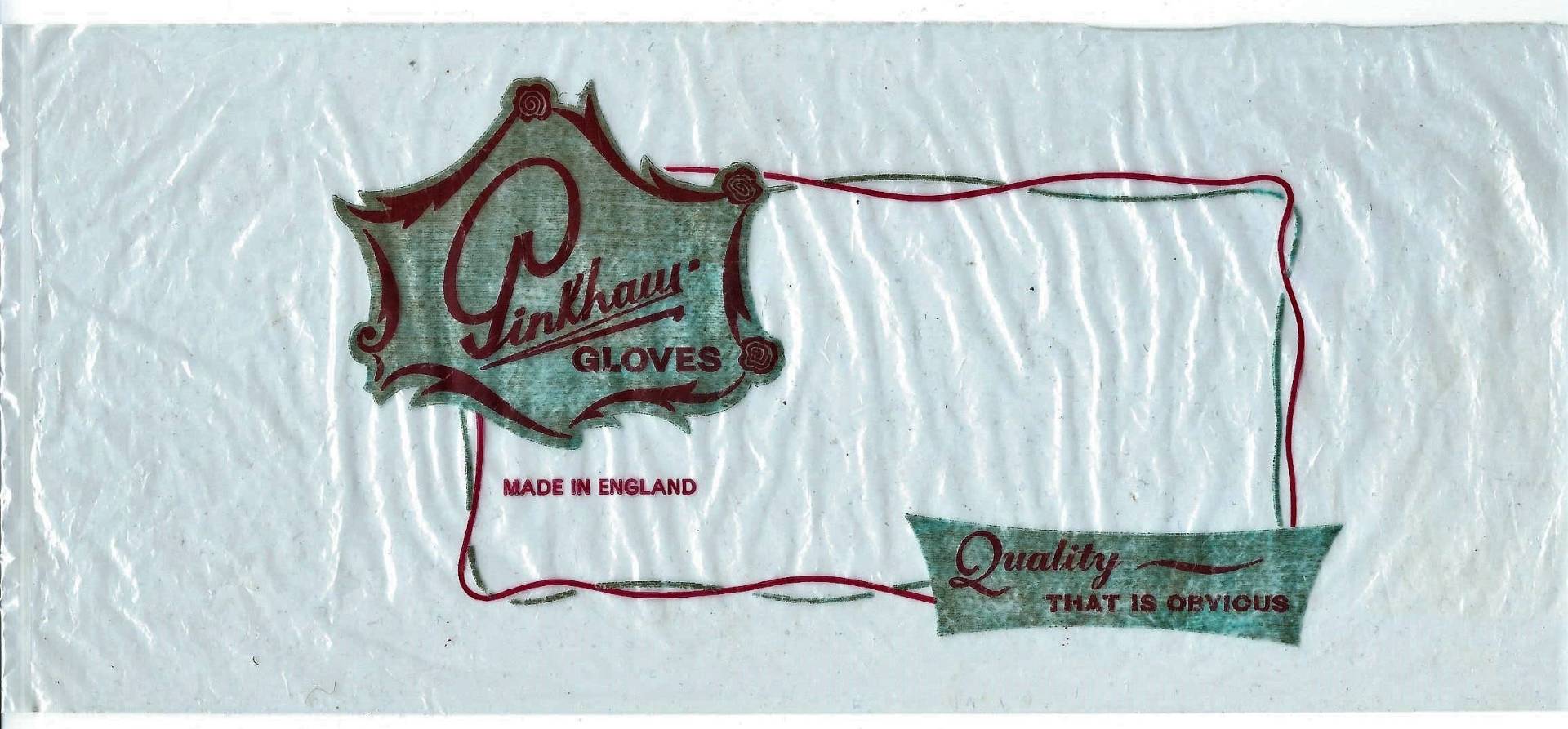
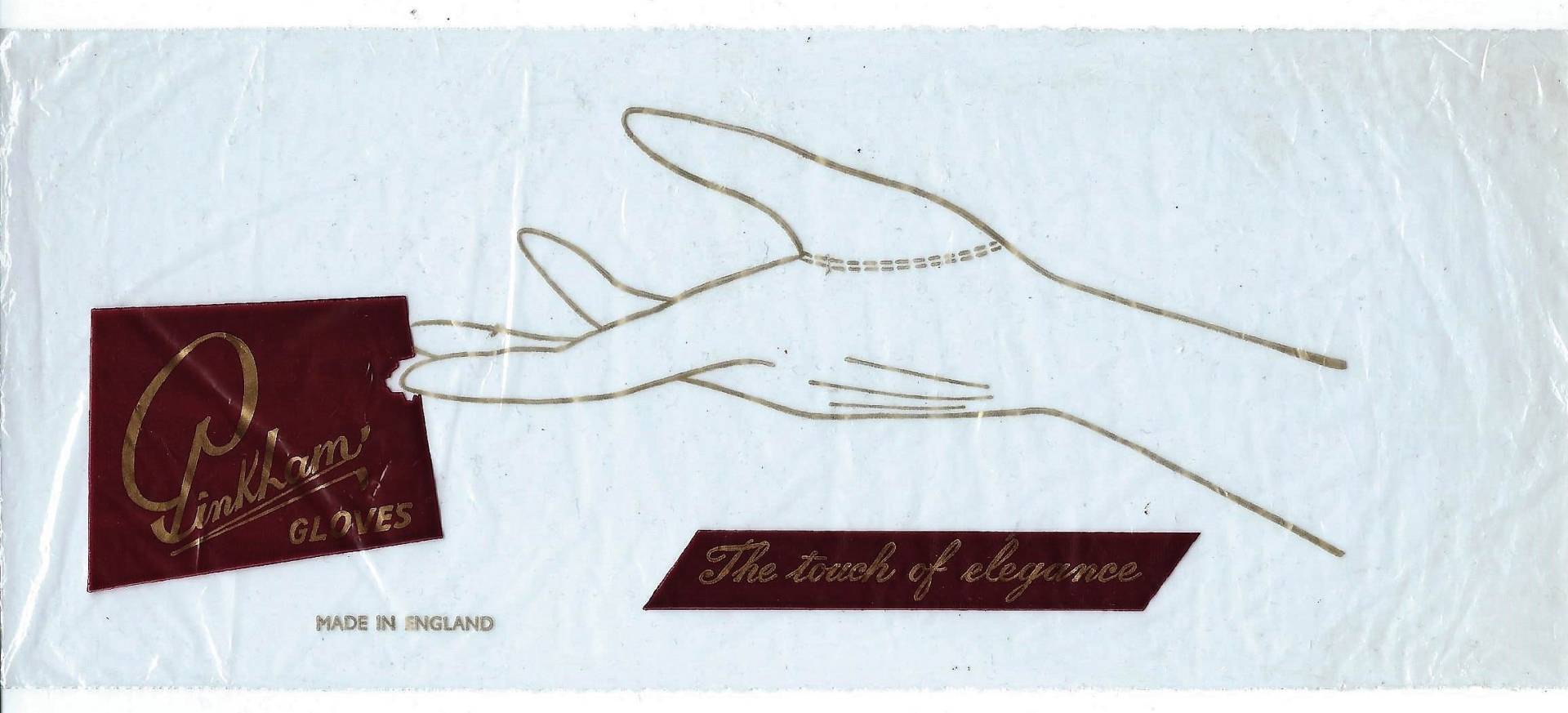
Export
From the 1950s and 1960s this turquoise coloured glove sleeve was discovered in Australia and it is believed that this colour may have been used for export gloves only.
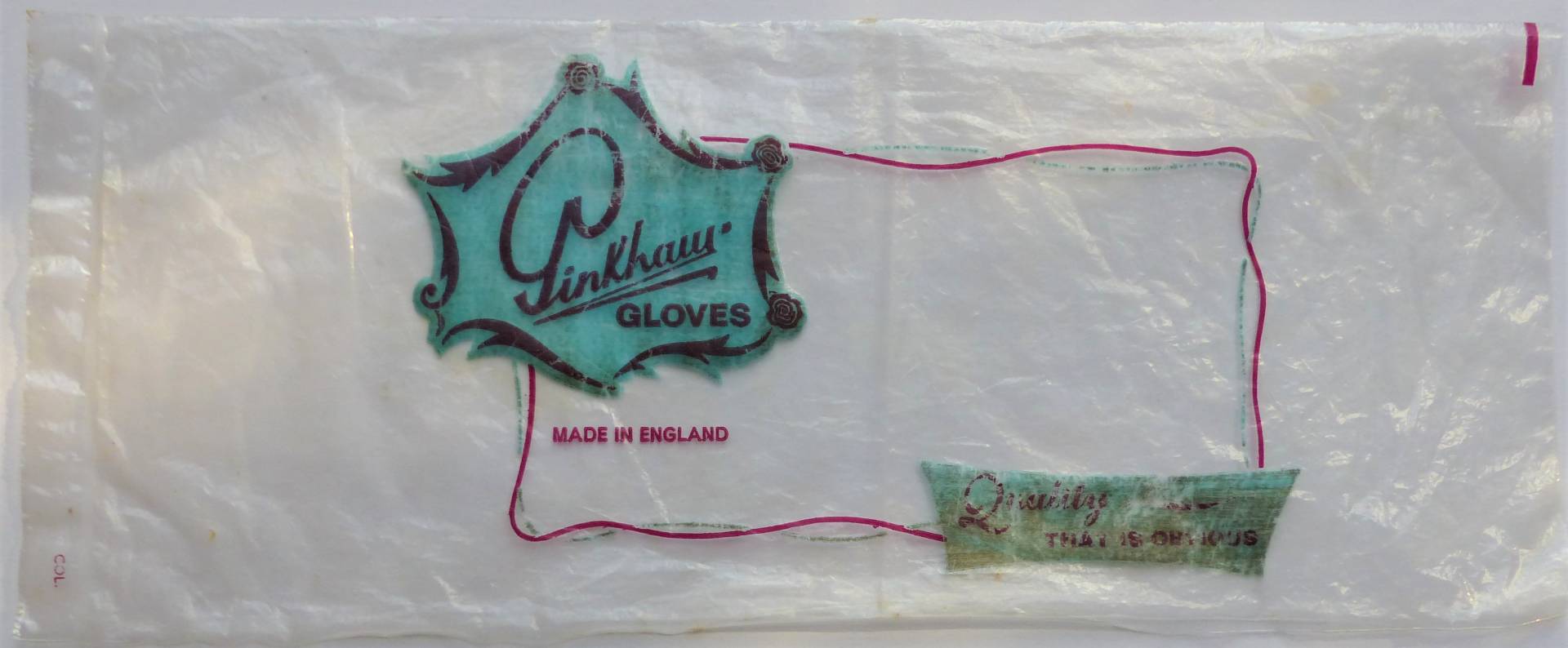
Cellophane
From the 1930s
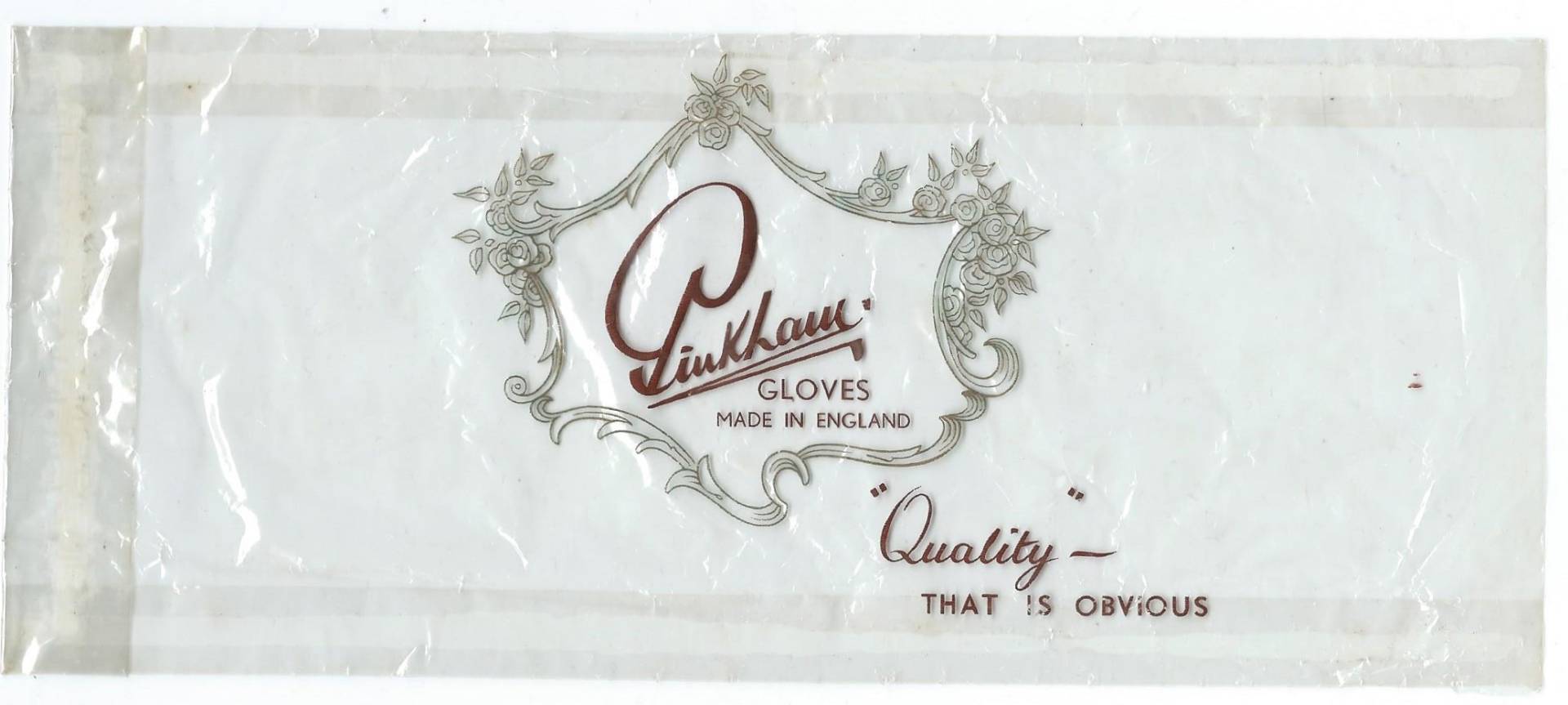
Presentation envelopes
Not so much Pack up your troubles in your old kit bag but Pack up your Sunday best gloves in this wonderful gold embossed presentation envelope from the 1950s.

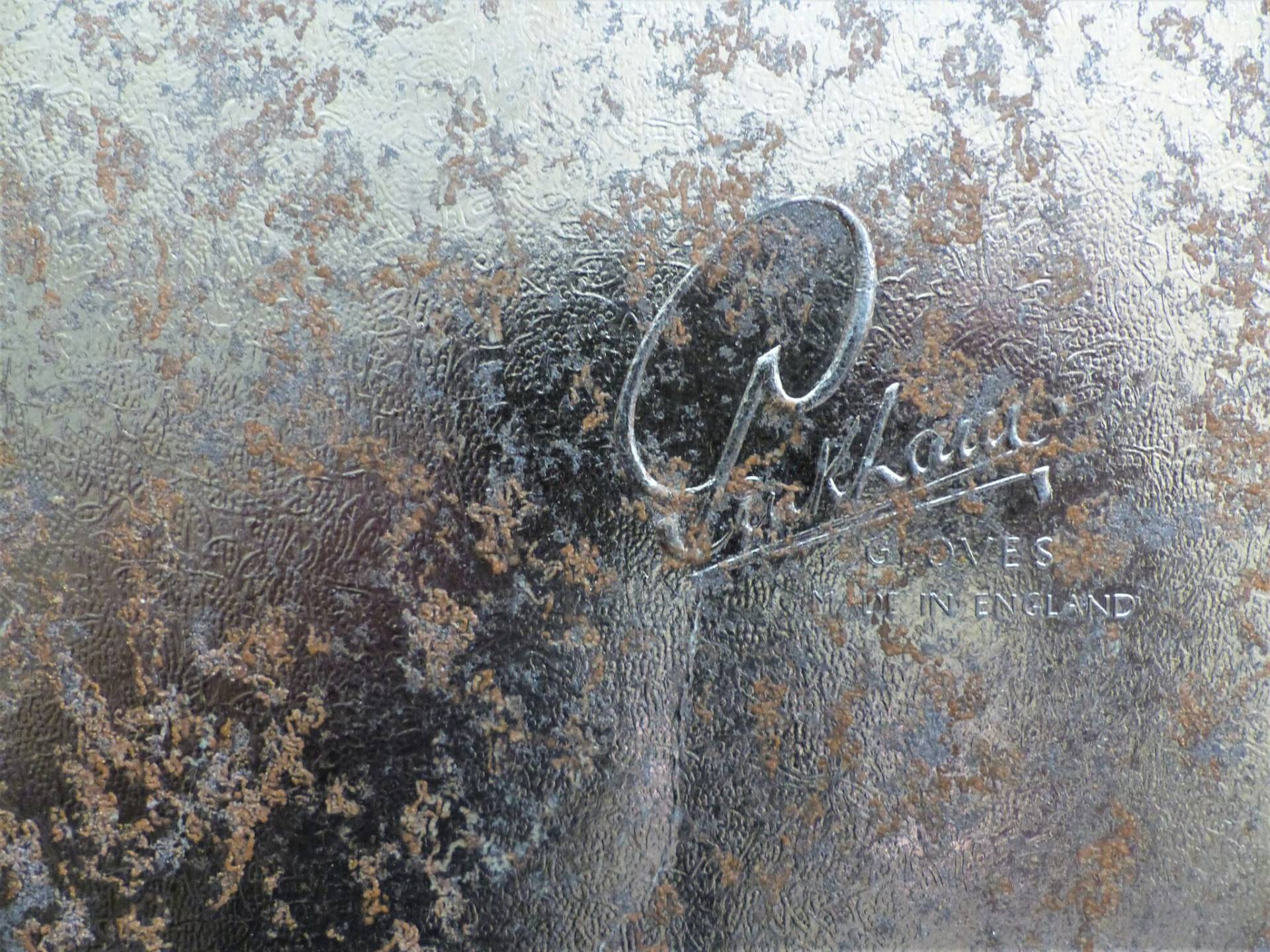
This rare find made its way to the Pinkham Collection from a dear friend of the collection, Lynn Jamieson of Timeless Gloves in West Sussex.
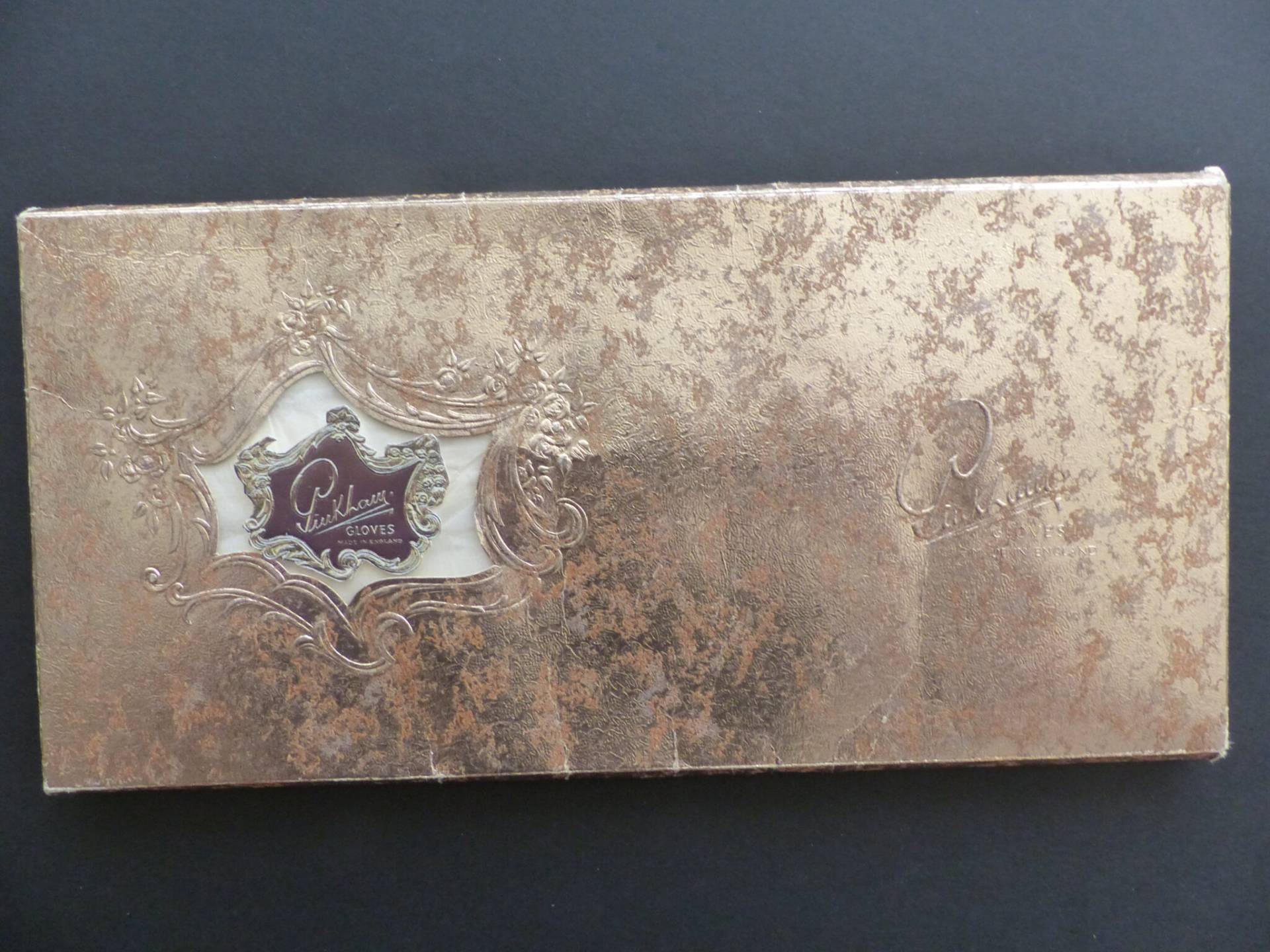
Glove labels
Fabric and cotton lined leather gloves had a fabric label sewn into the inner seem of one of the pair. With unlined leather gloves and some fabric gloves the Pinkham logo and glove sizes were printed on the inner palm of one of the pair. In addition to 'Made in England' appearing on all the labels, labels would show the glove size and in some cases the type of fabric. Typically the fabrics used were Bri-Nylon and Nylon/Rayon along with various cottons. On the fine nylon gloves Ladderproof was also included.
Sewn-in fabric
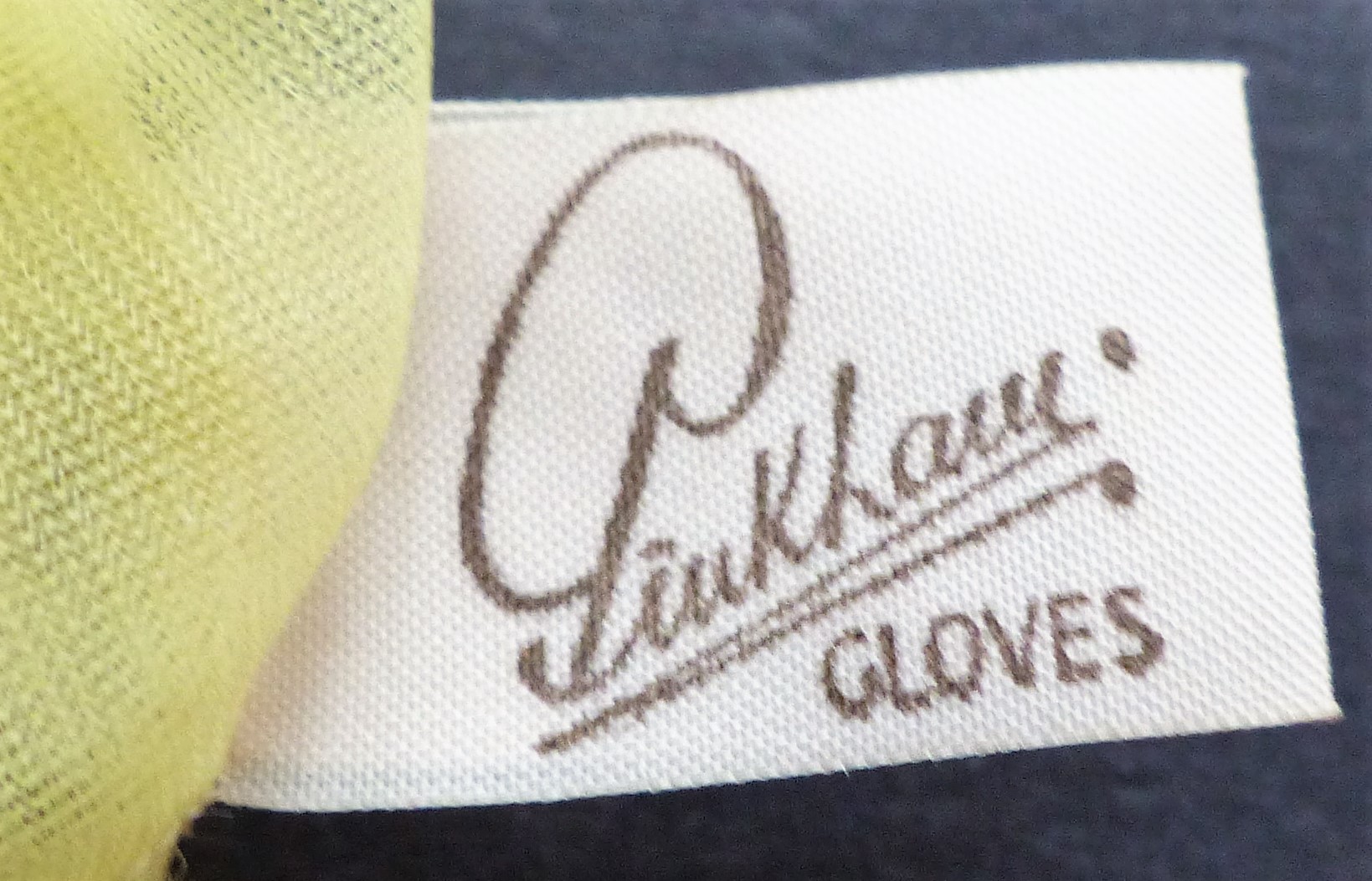
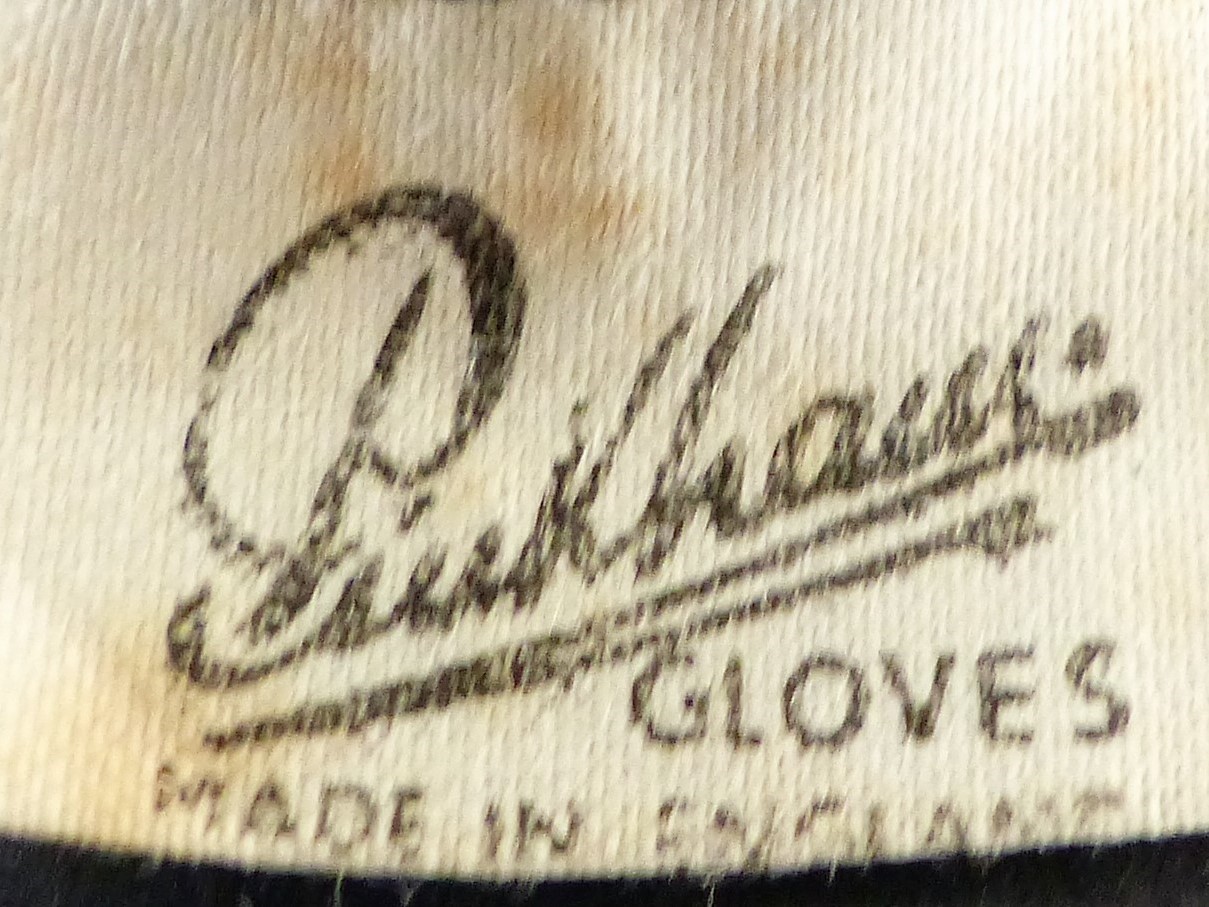

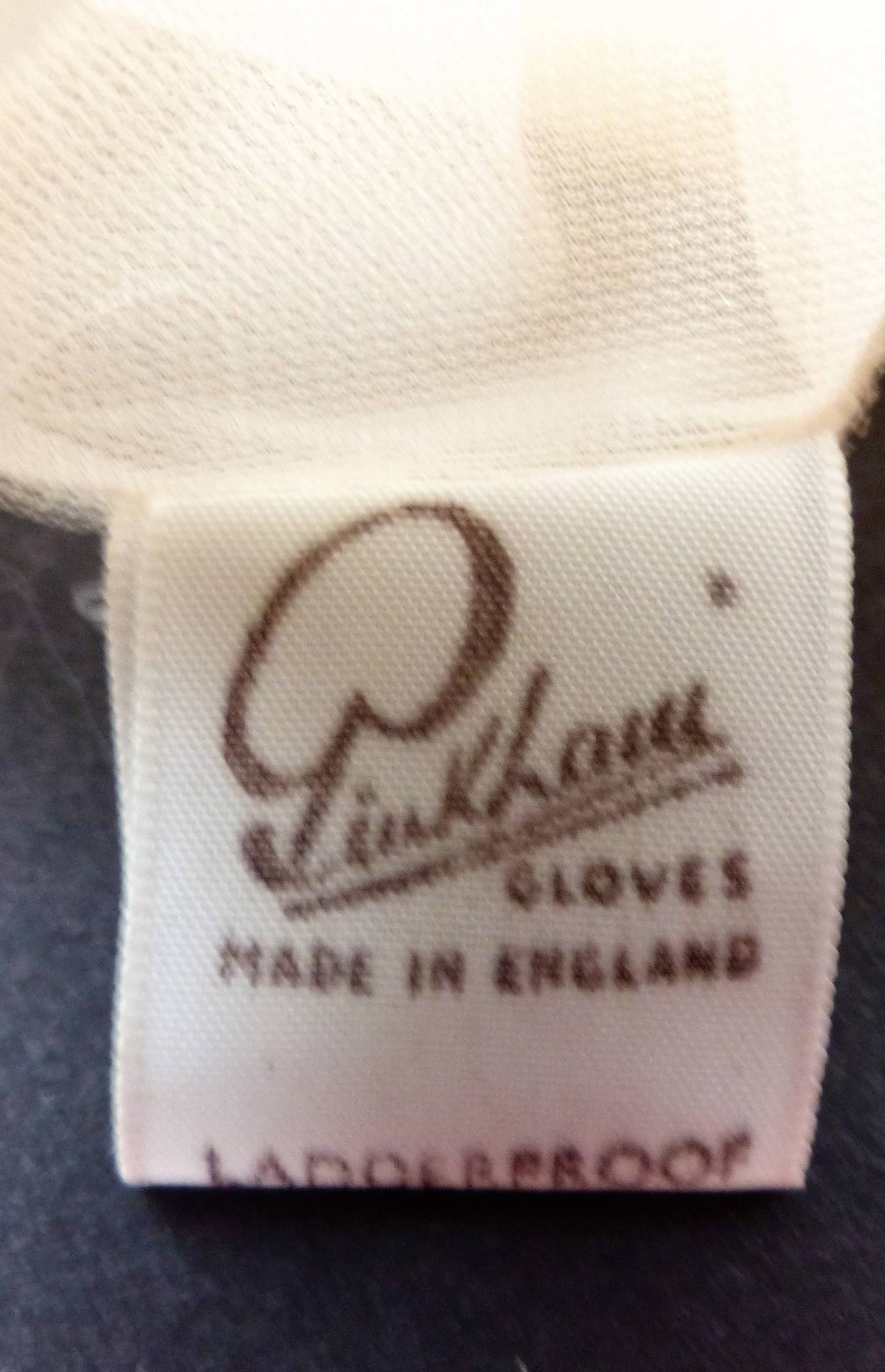
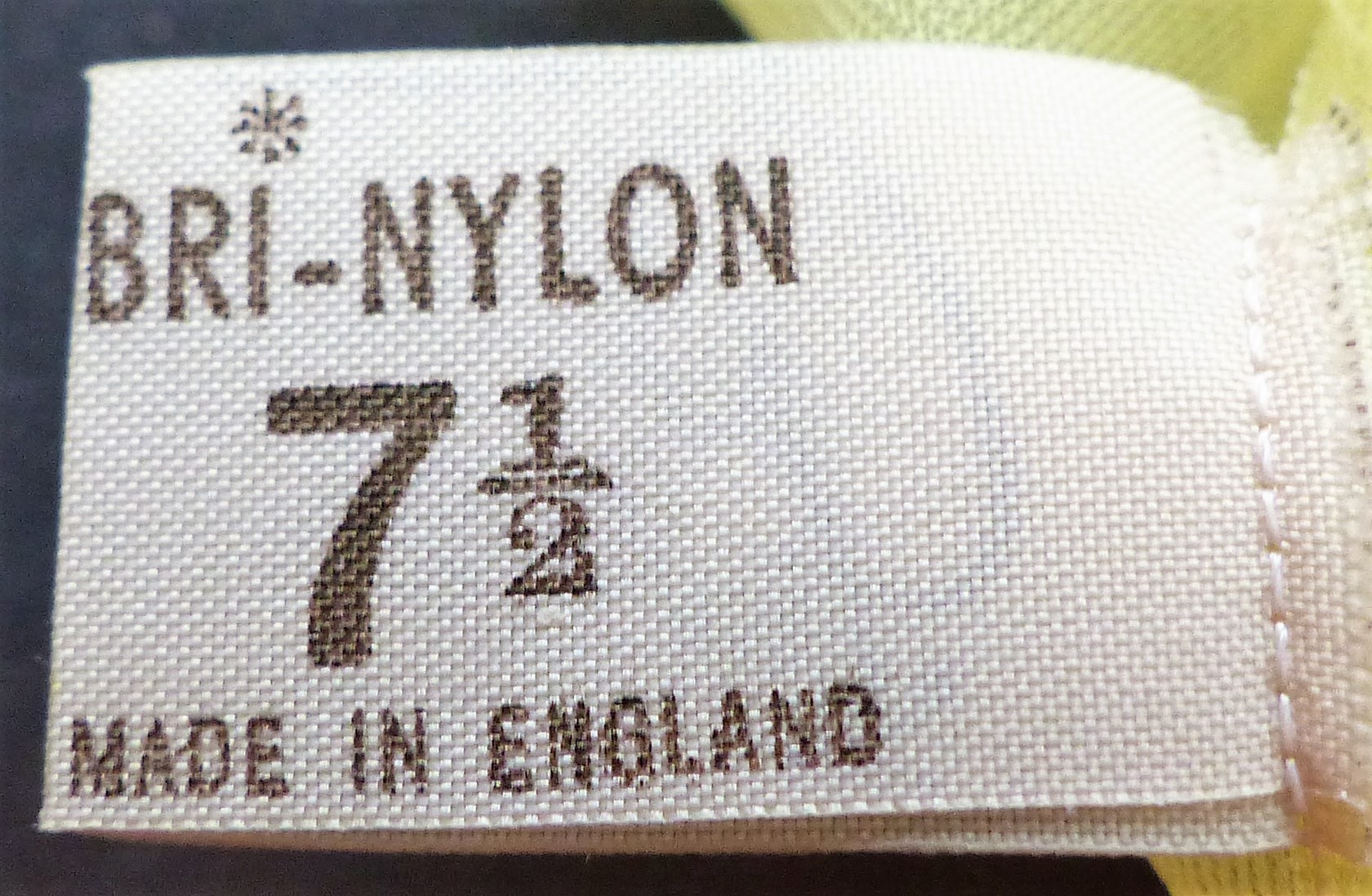

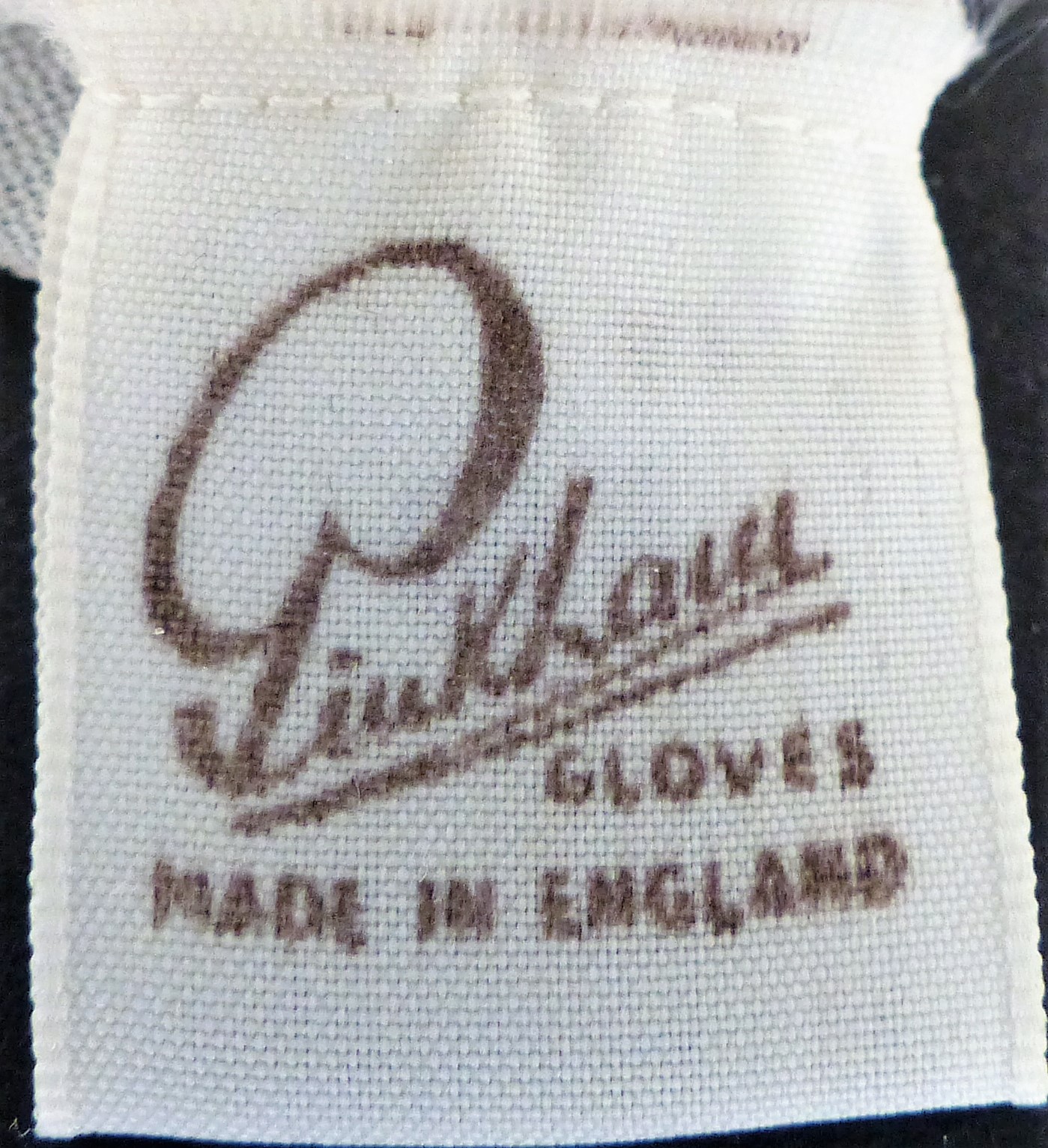
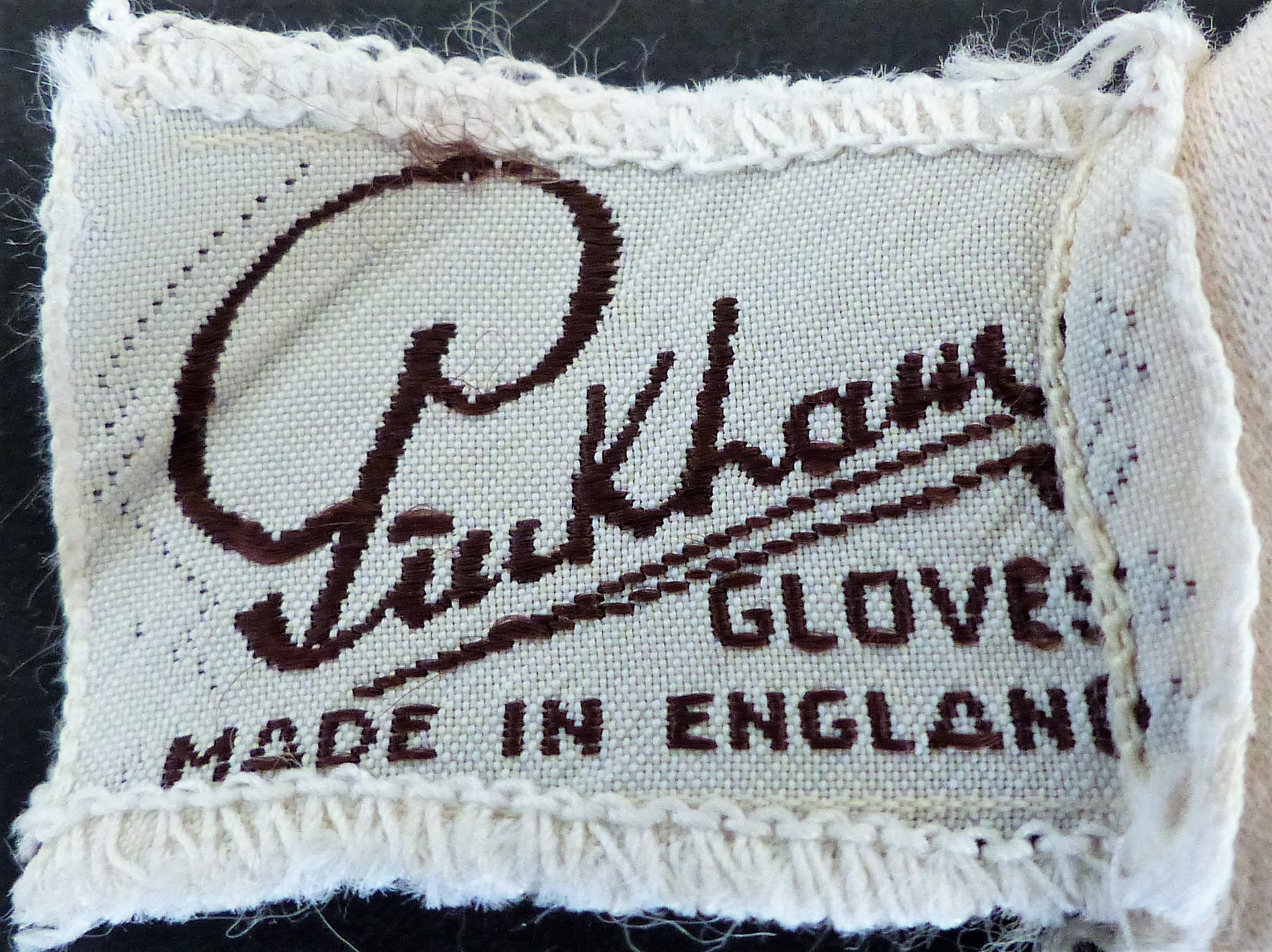
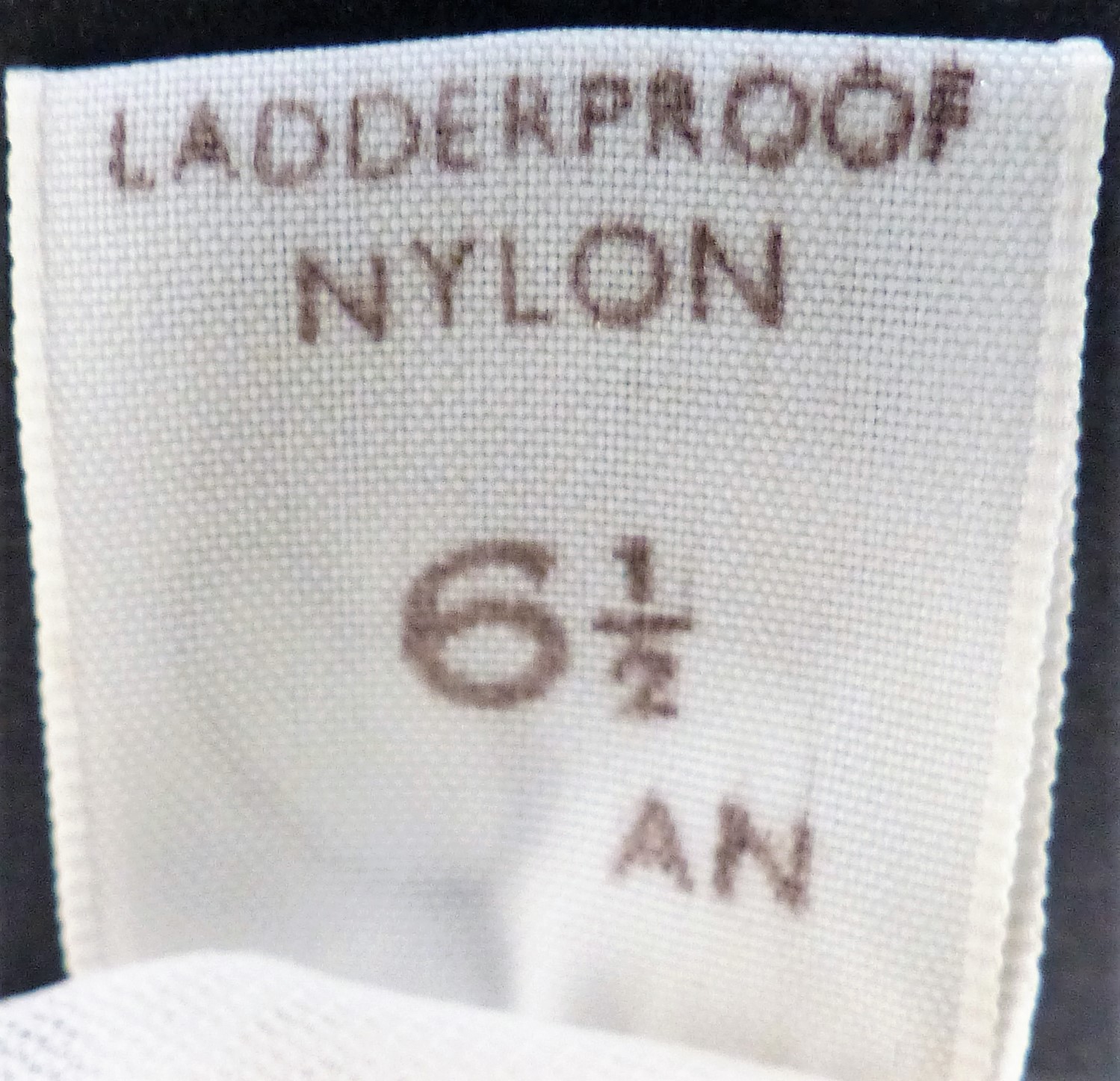
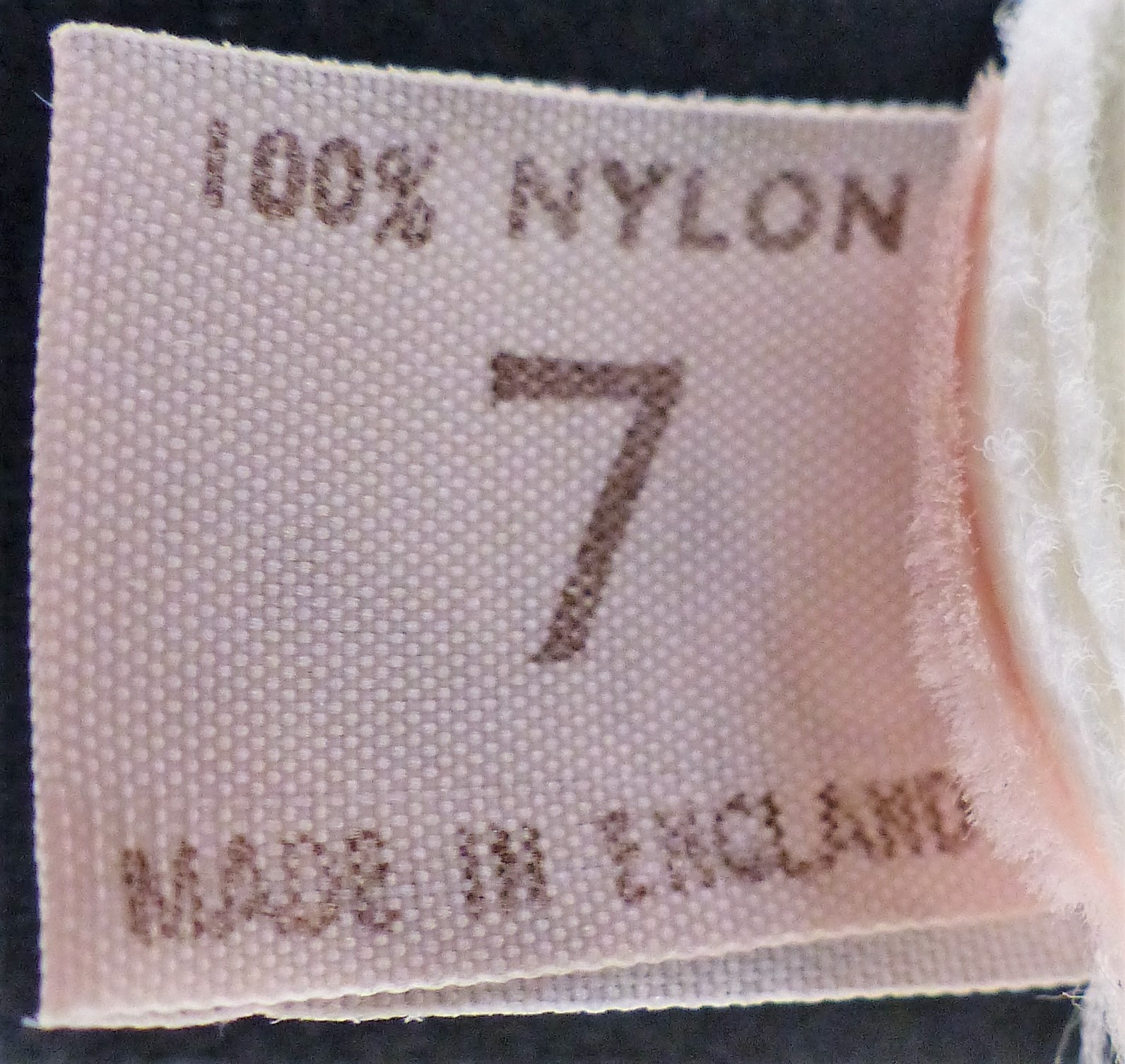
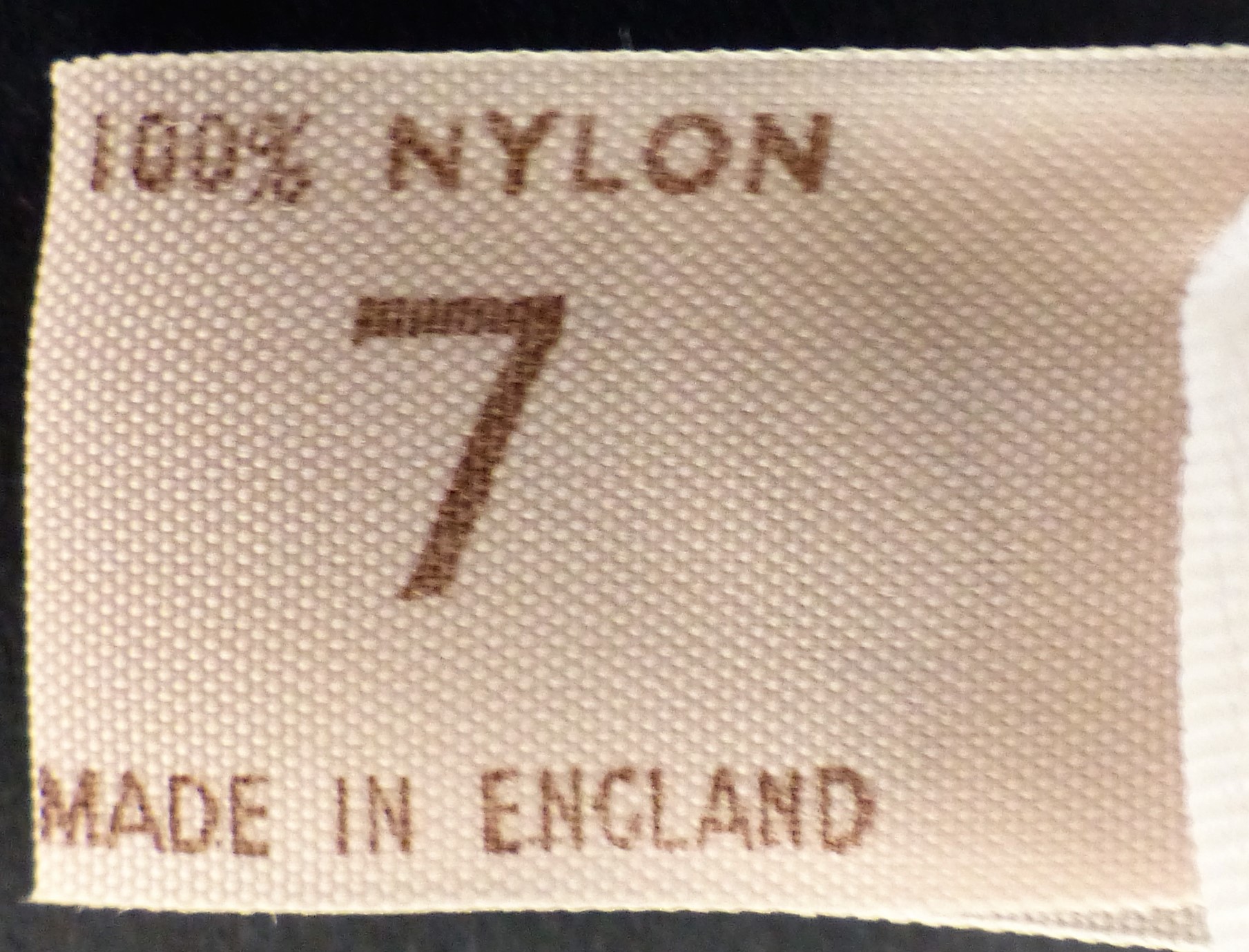
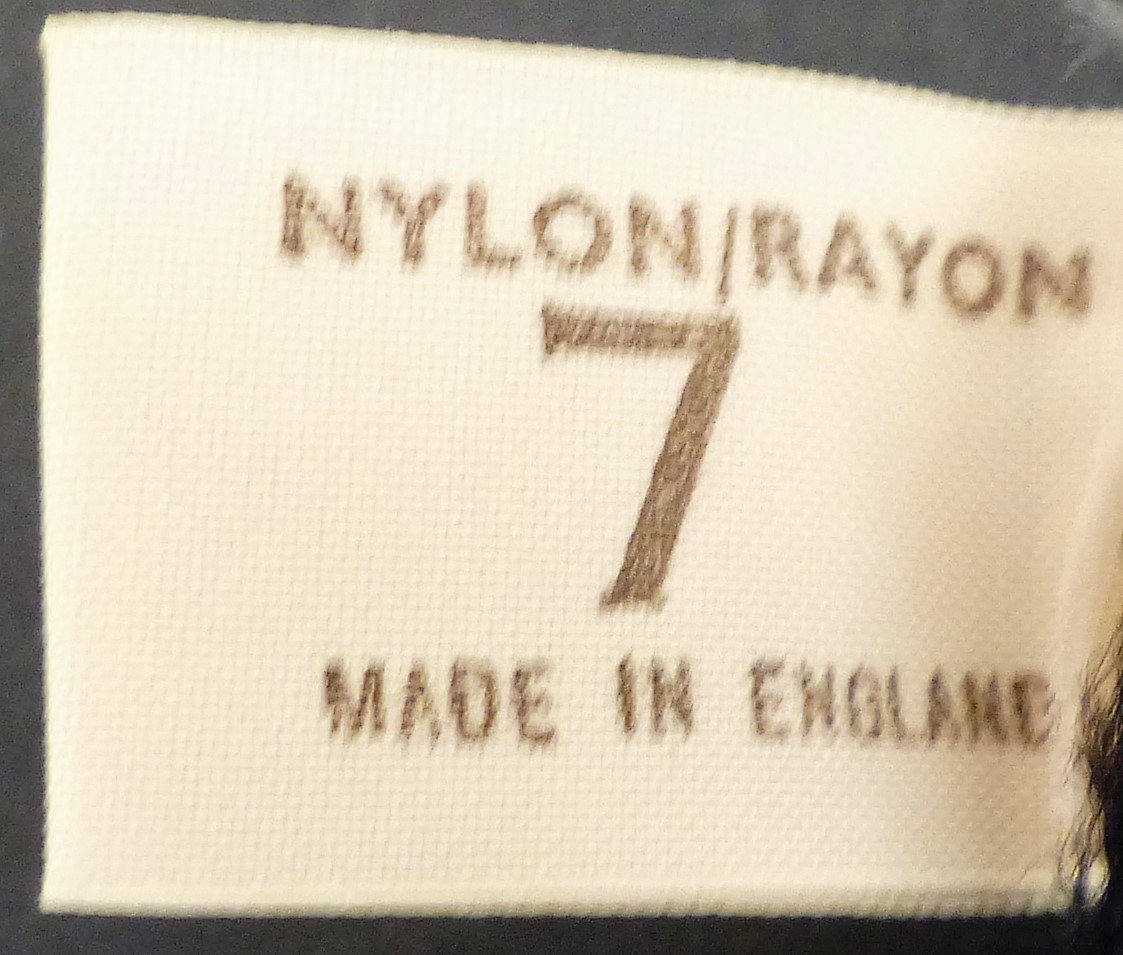
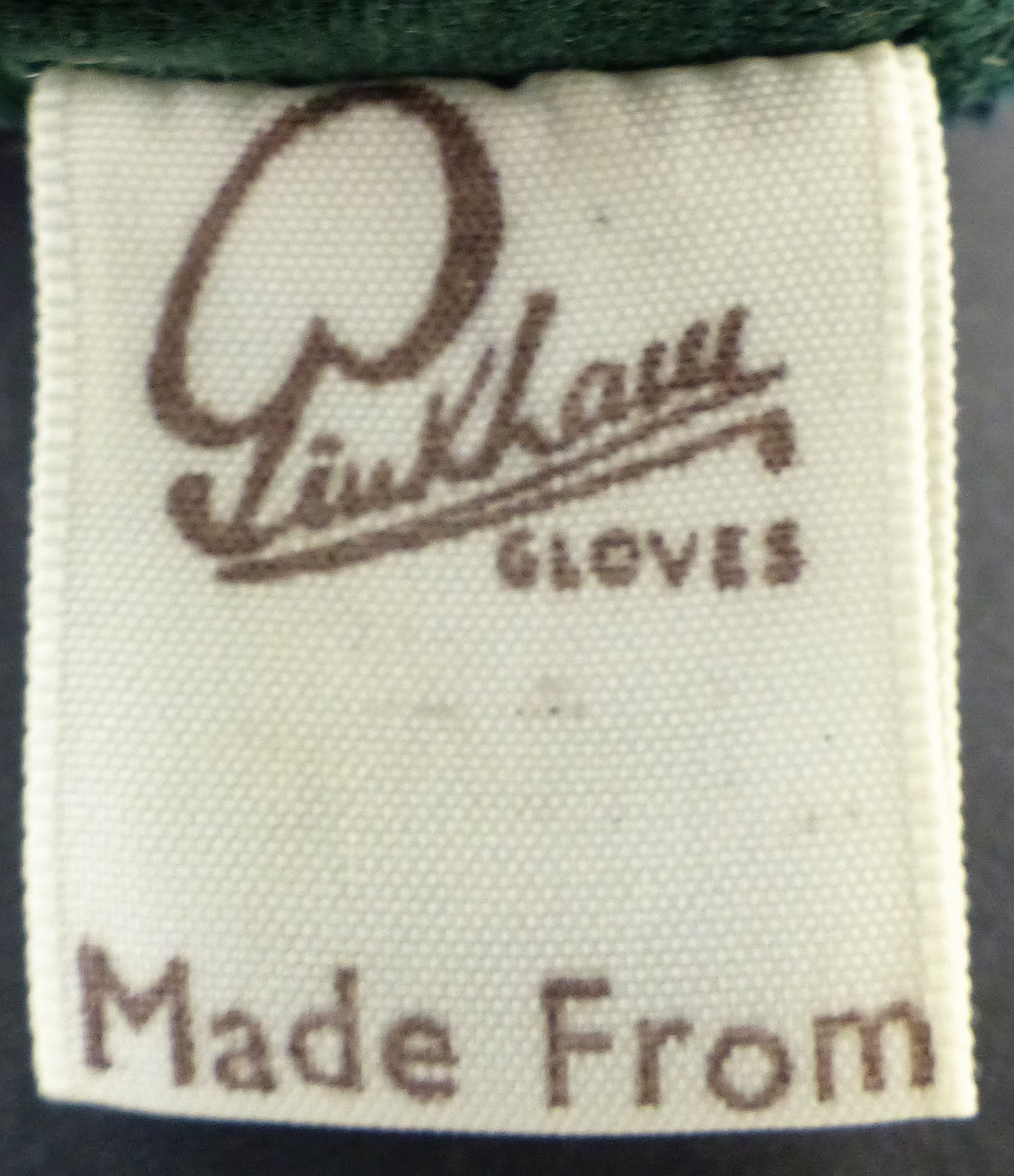
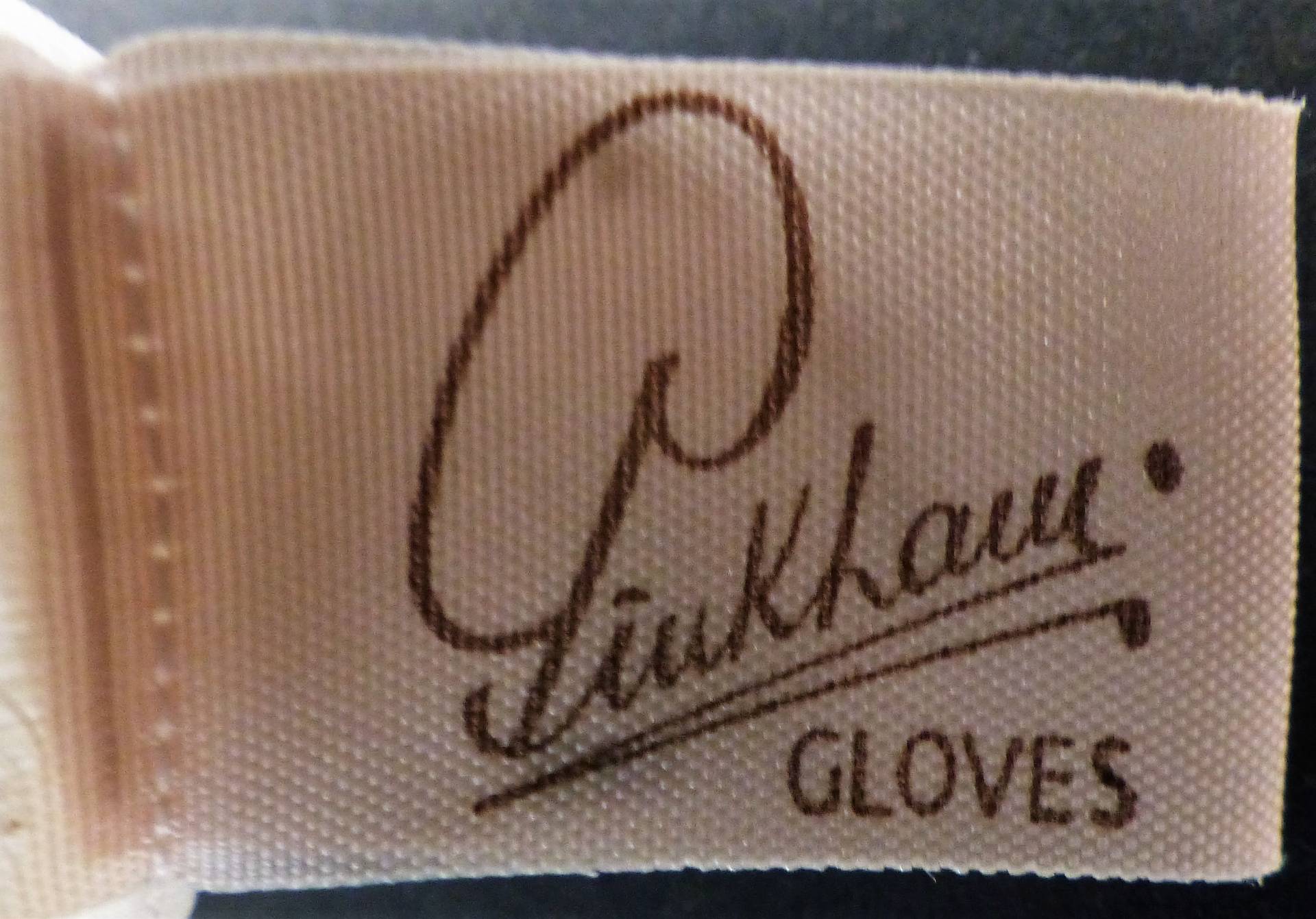

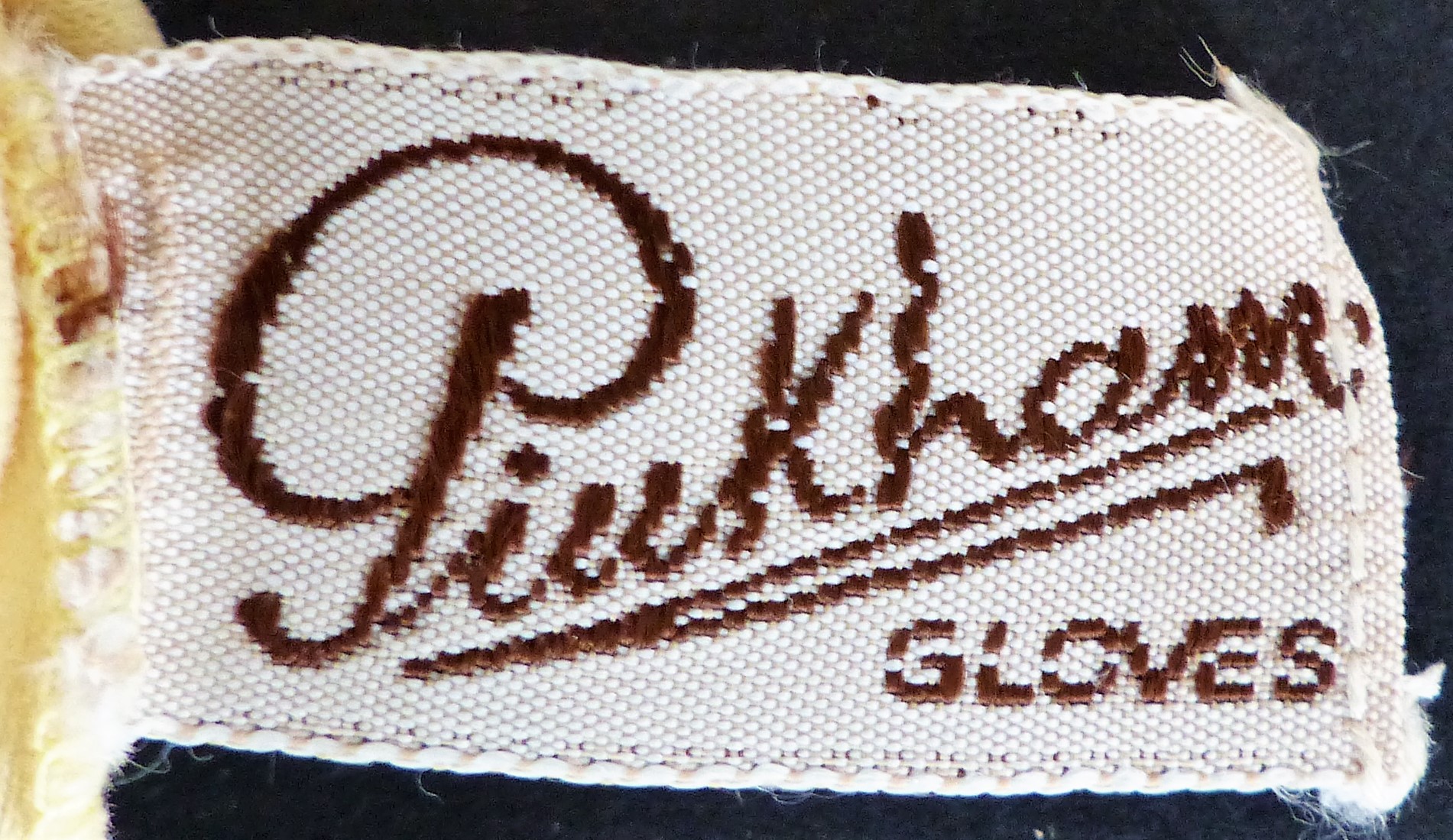

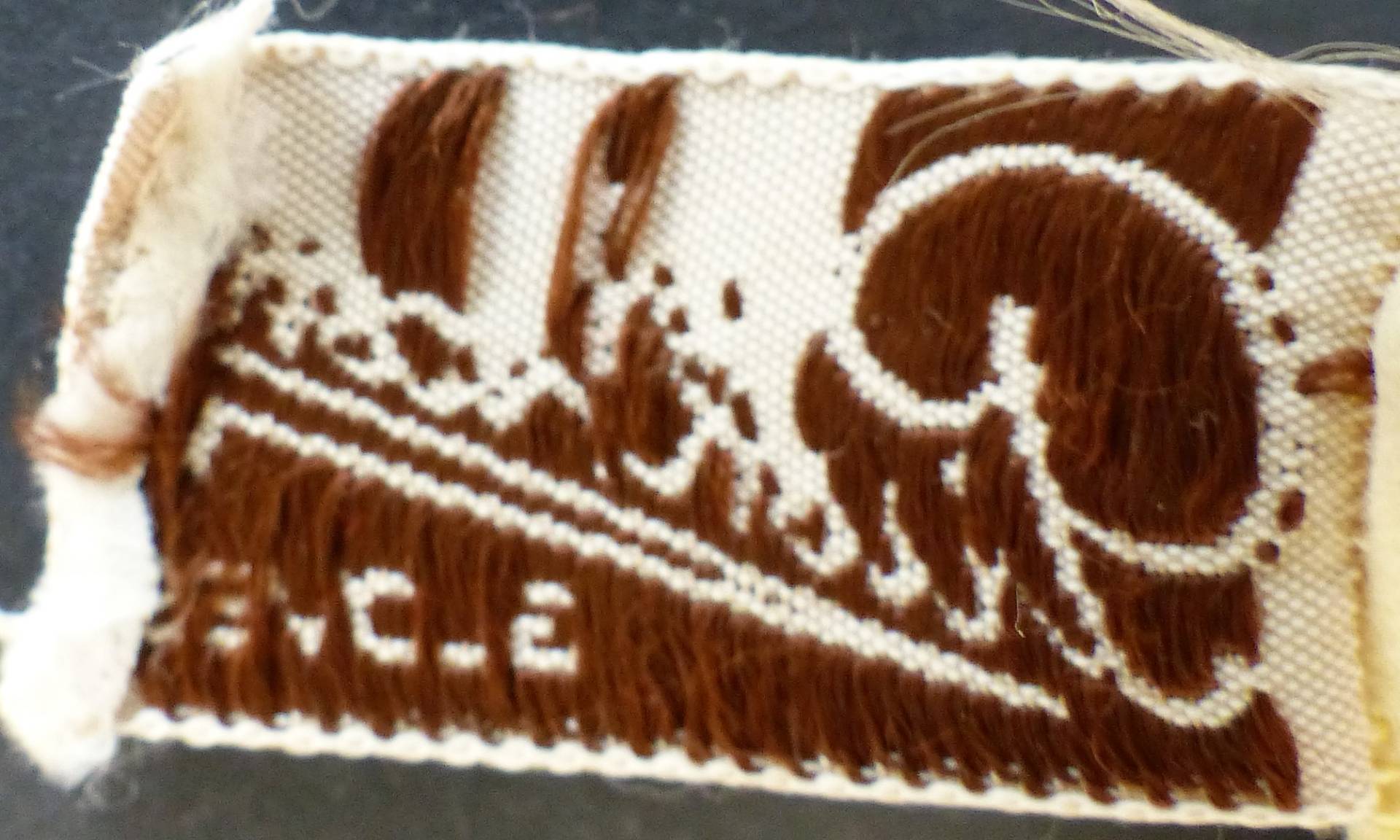
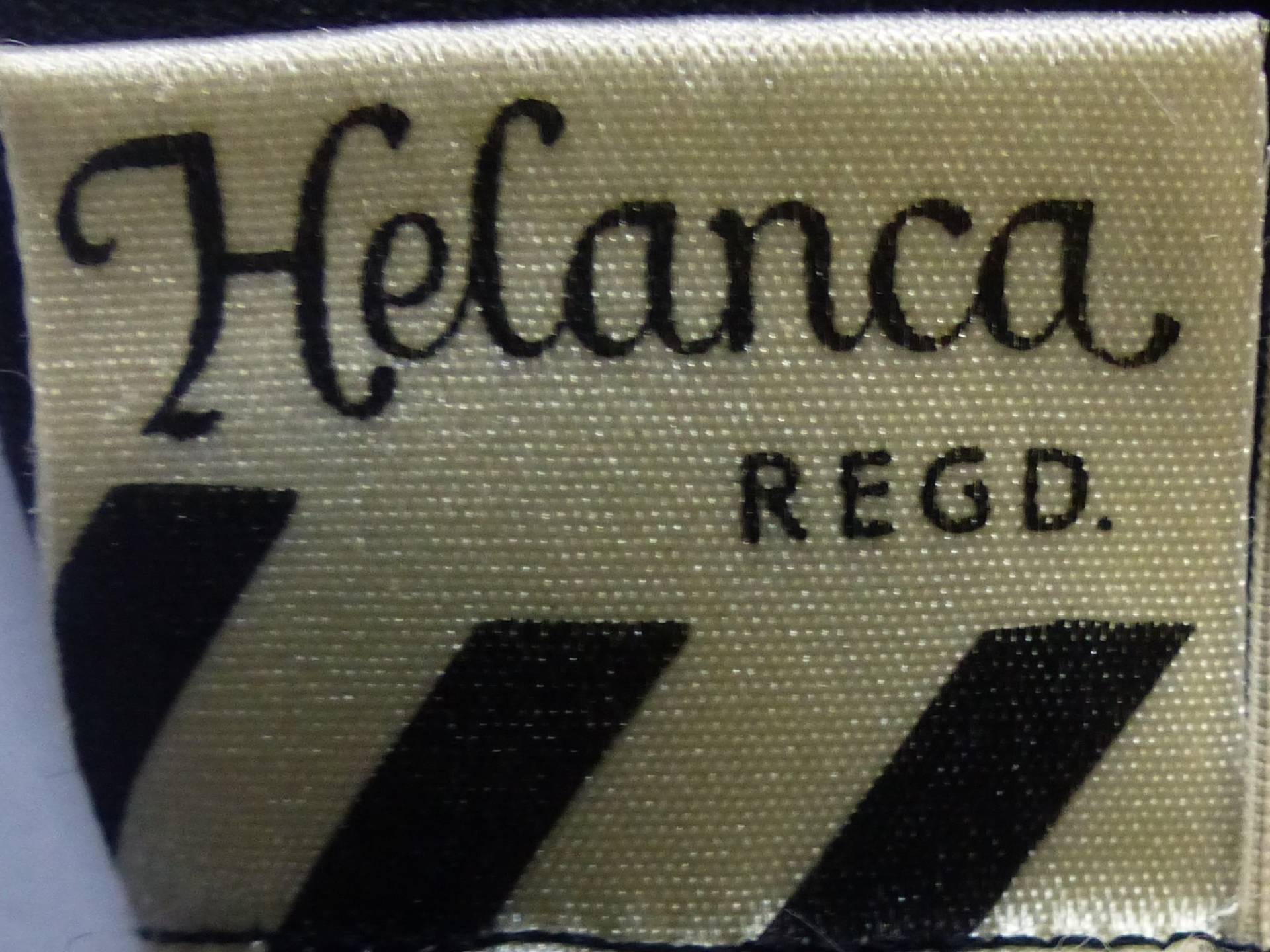
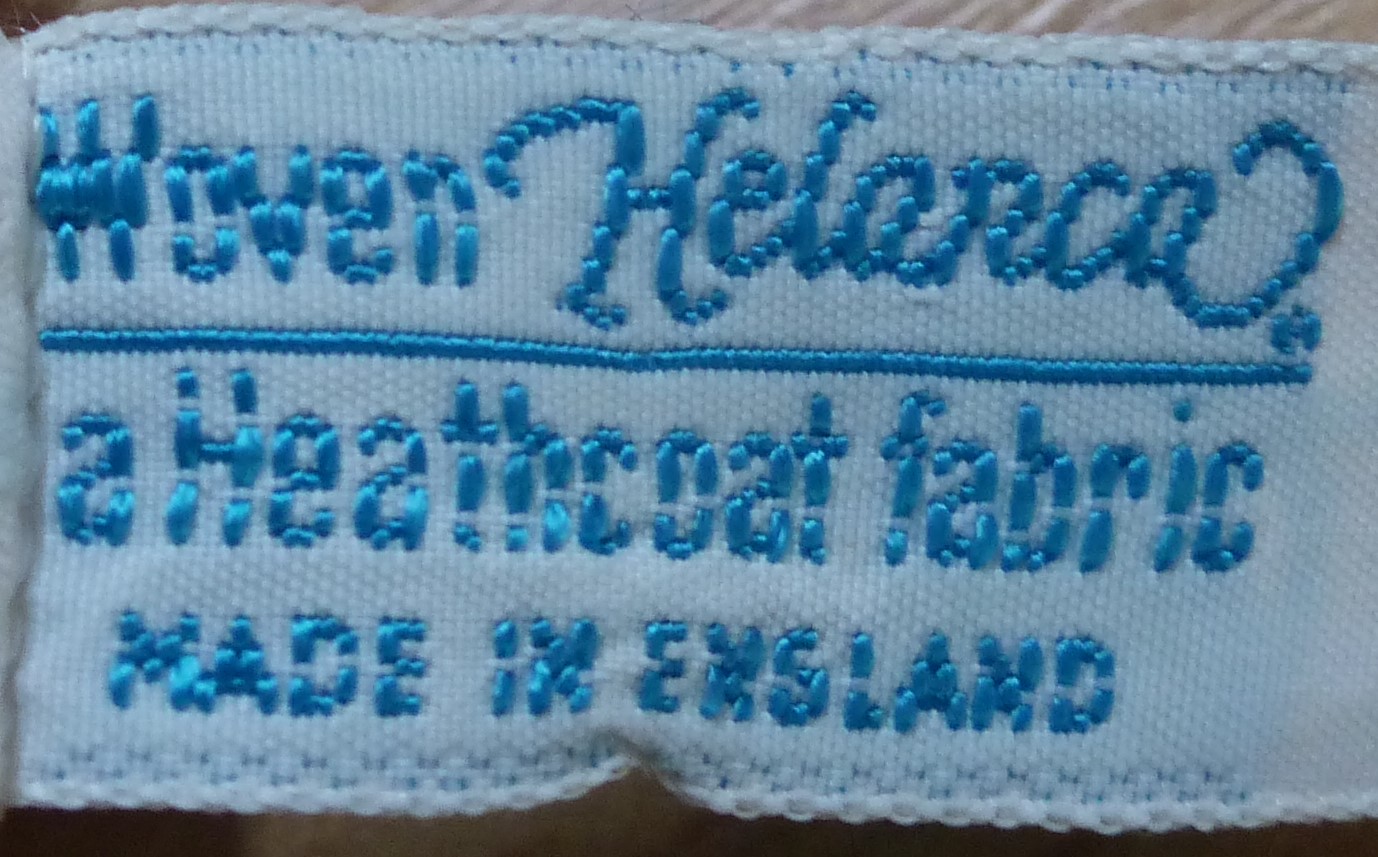
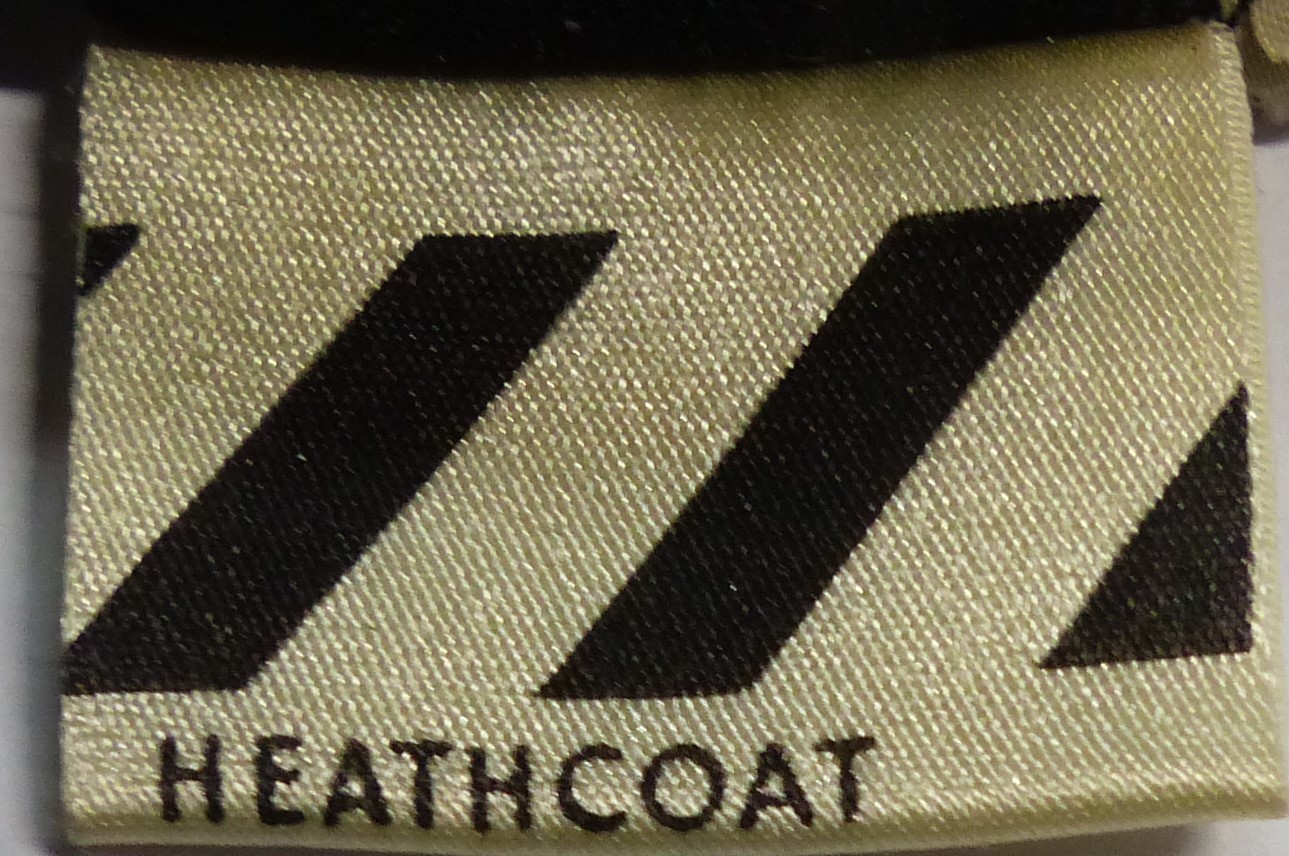



Printed-on-labels - fabric and leather gloves
Unlined leather and some fabric gloves had a label onto the palm of one of the gloves.
Fabric gloves
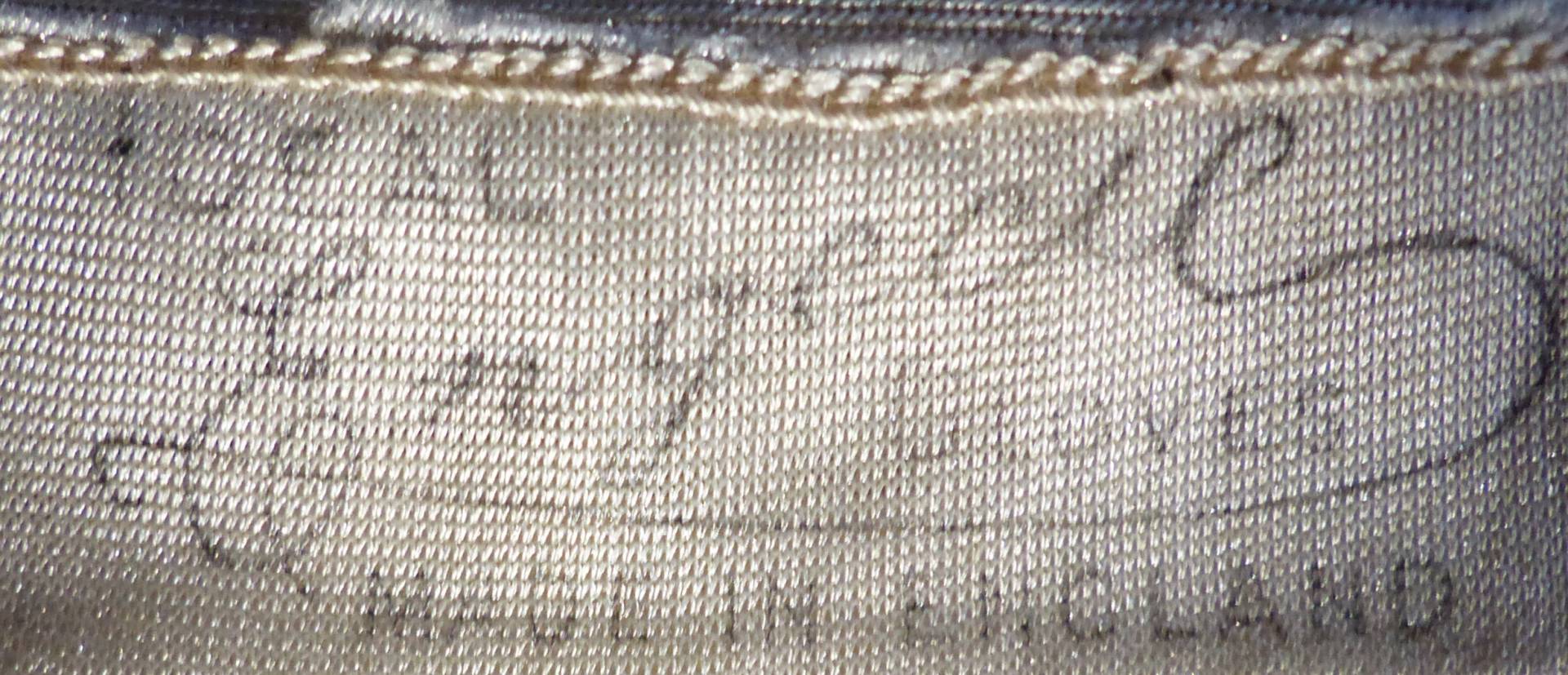
The earliest National Glove Company 'Engecie' printed label from around 1912
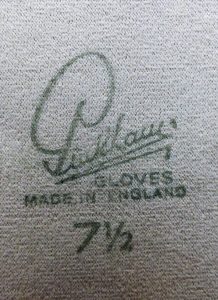

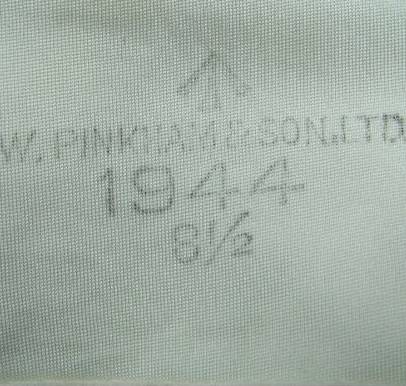
This label is from a pair of silk gloves that were made during the war for RAF crew. The gloves which were very thin were worn underneath their flying gloves to provide another layer of insulation.
Leather gloves
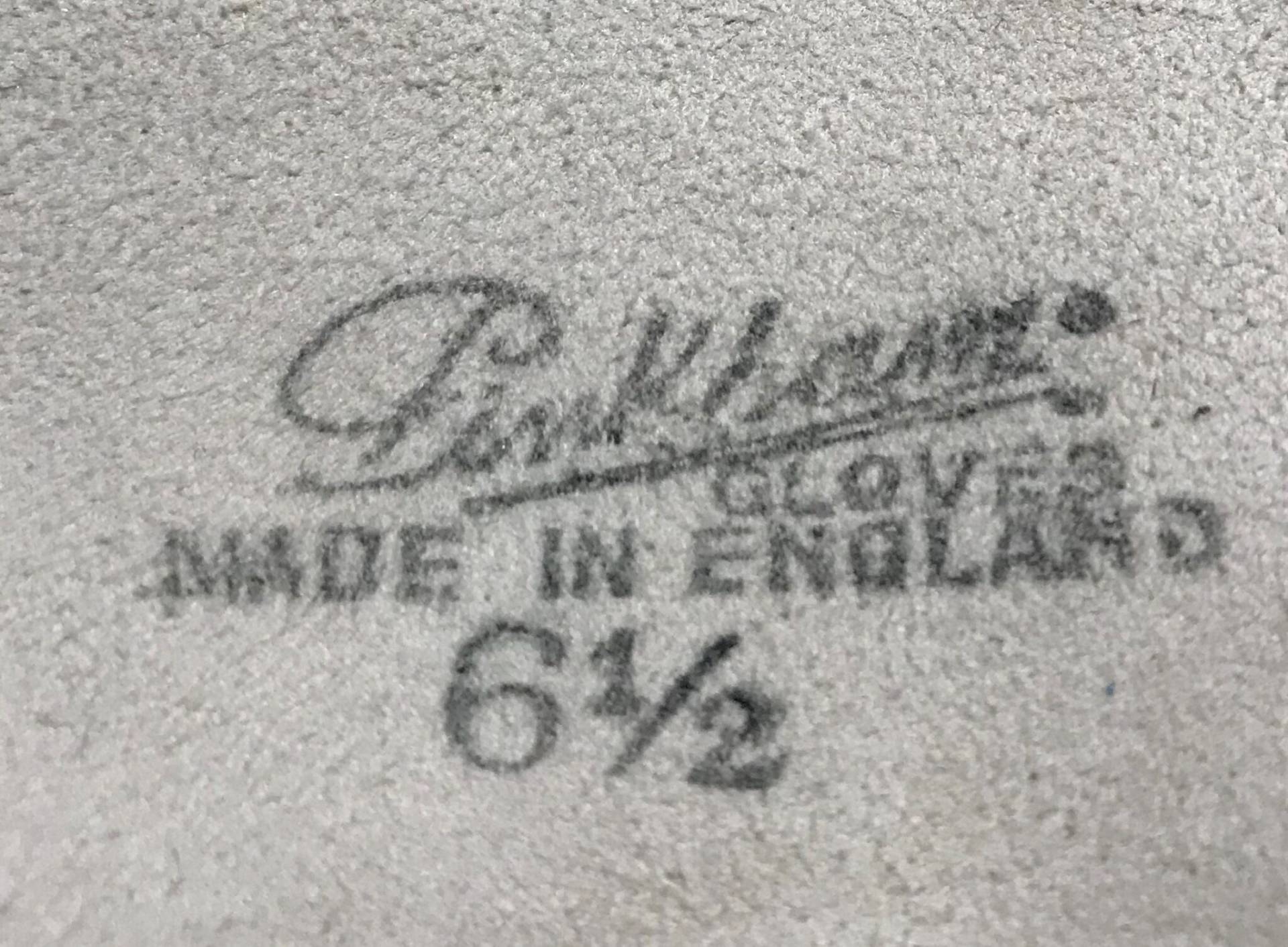
These printed makers marks are from leather gloves which did not lend themselves to having a sewn in label
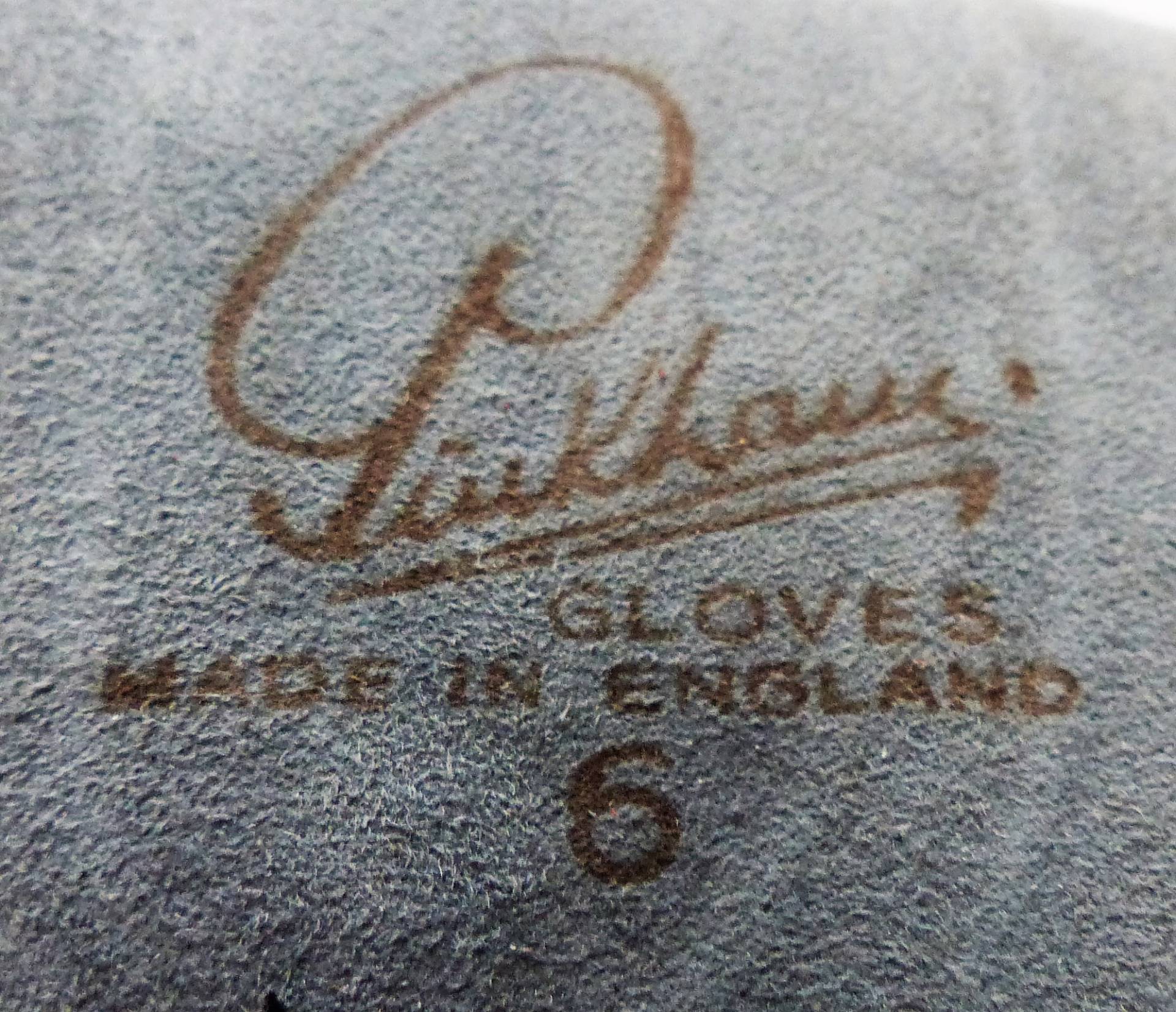
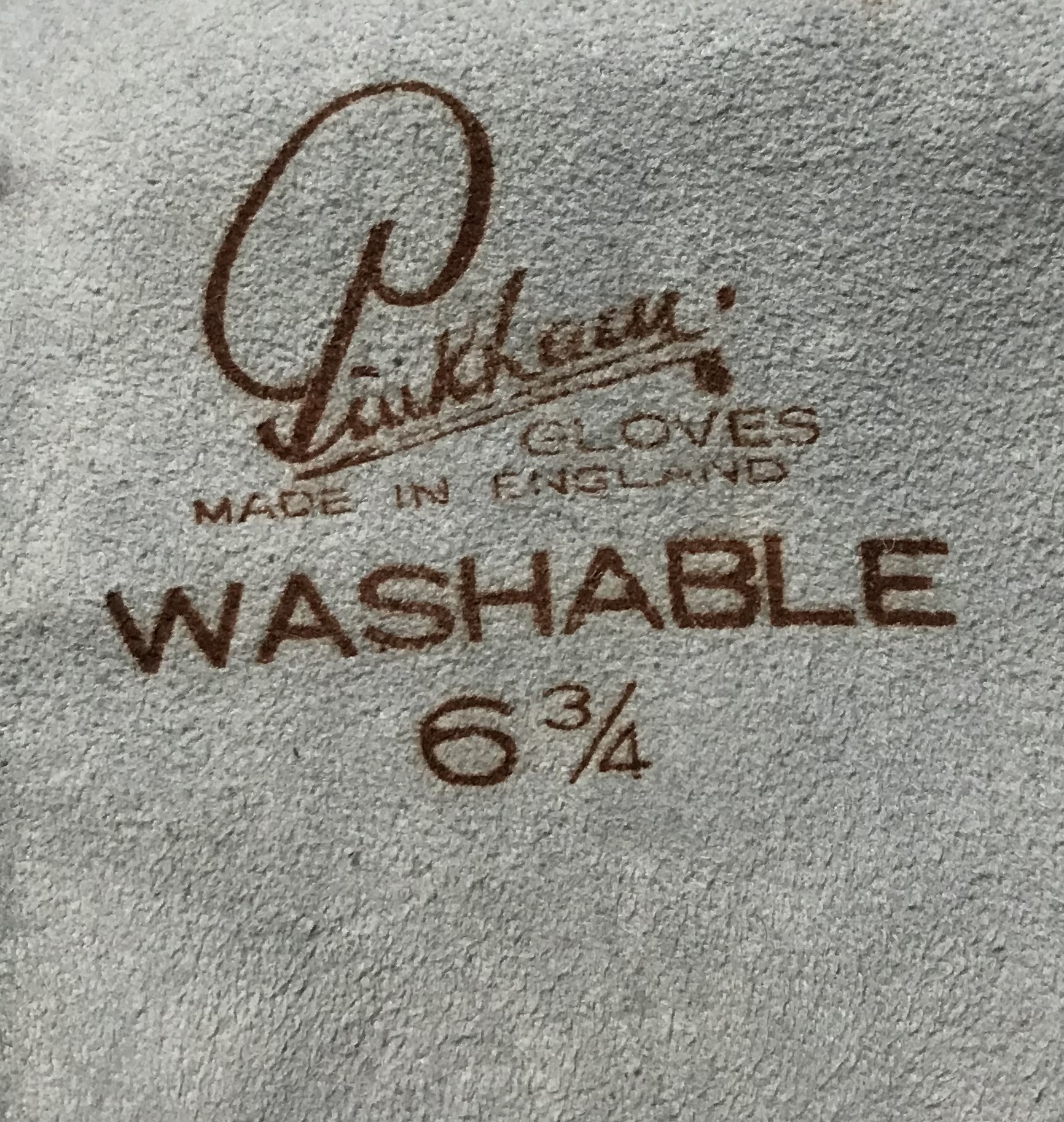
Card labels
Also included with each pair of gloves was a small card label, some attached by a small thread and some secured by a folded tab attached to the cuff of the glove. The labels contained information about how to look after the gloves and also the famous Pinkham guarantee.

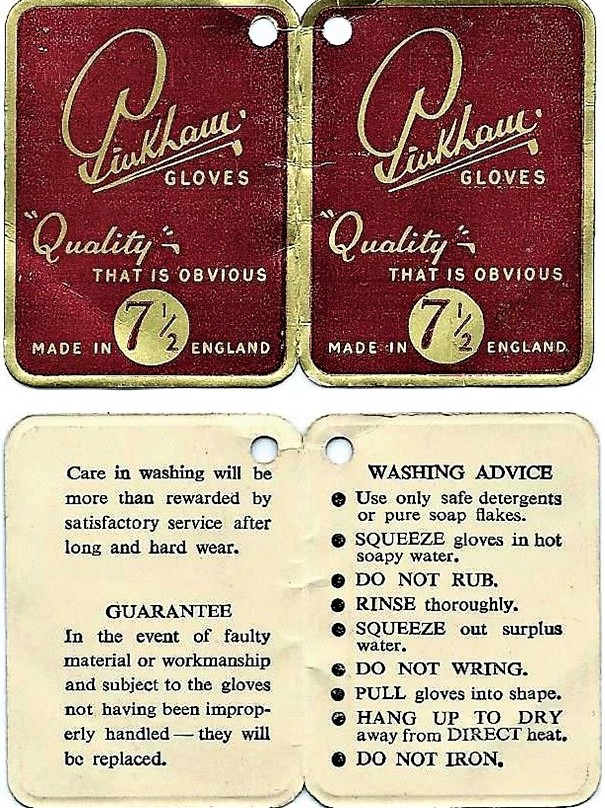
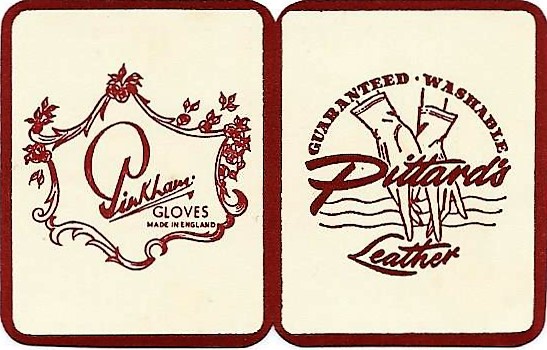
s
This label from the late 1950s acknowledges Pittards of Yeovil as the suppliers of the leather used to make a superior pair of Pinkham's leather gloves. It also reflects the close association between the two companies. Pittards continued to produce fine leathers, leather products and gloves until 2023.
Wear and care
To ensure that the wearer got the best from their new Pinkham gloves also included with each pair of gloves were directions on how to keep them looking like new.
Here are examples of fabric and leather care instructions.
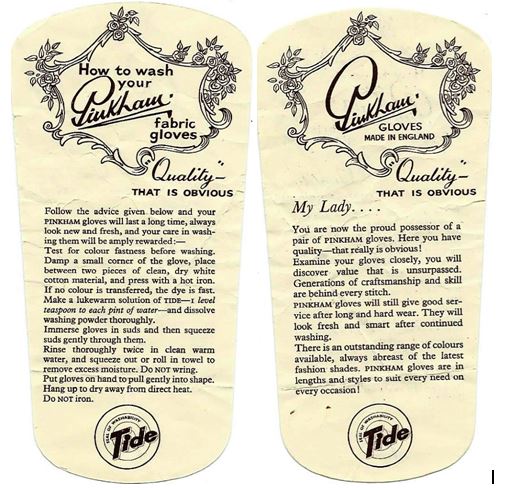
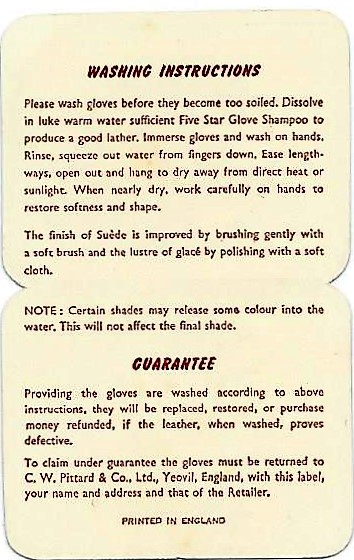
Boxes and box labels
The finished gloves were packed in boxes of twelve pairs ready for dispatch. Each box had an outer label attached to it showing the style number, colour, size and and fabric type. Gloves were packed in different types of boxes depending on the type of glove. Expensive leather gloves were packed in cream cardboard boxes and sealed with a sticky circular ‘P’. Below is a standard brown cardboard box that was used for cotton gloves in the late 1950s.
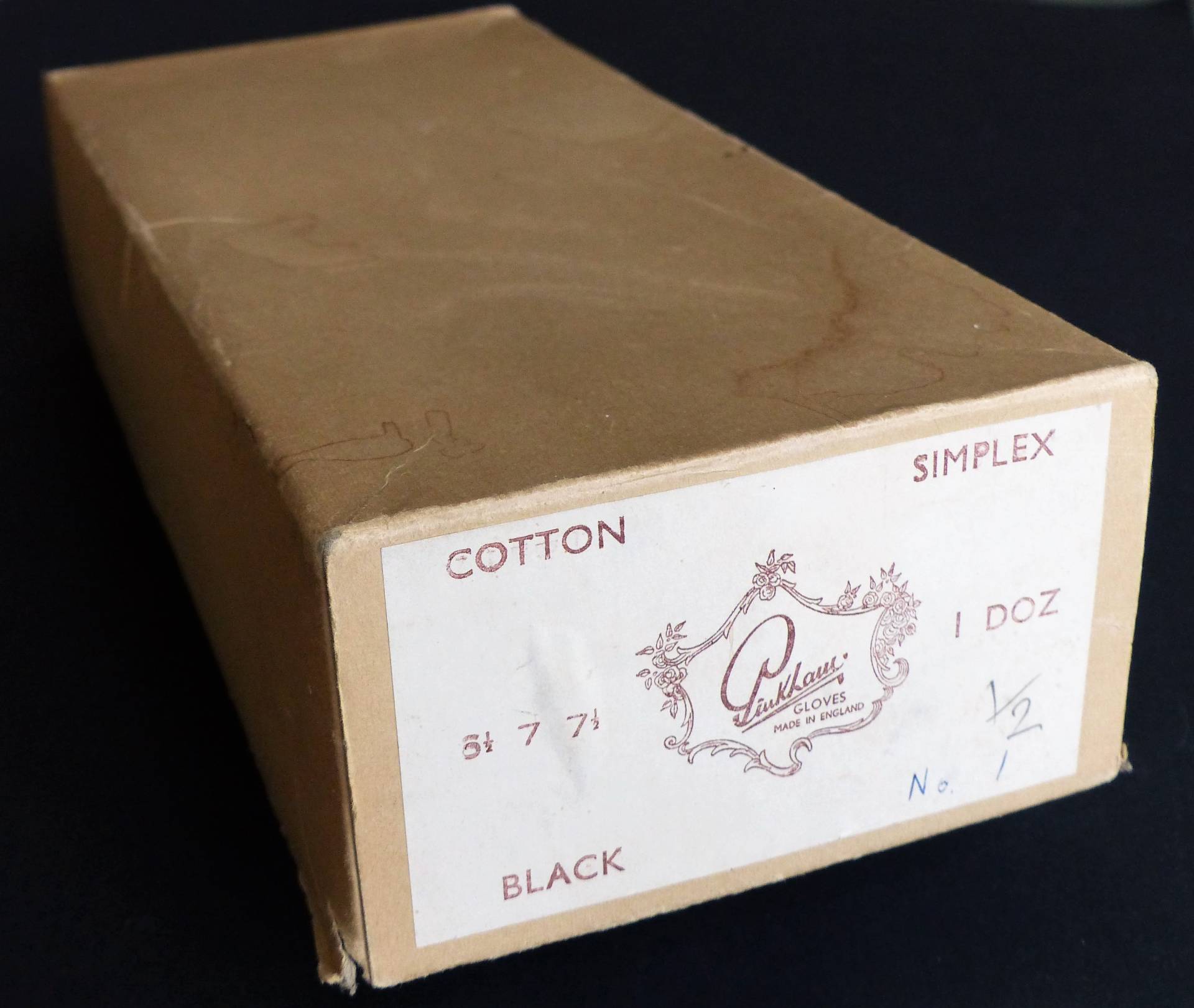
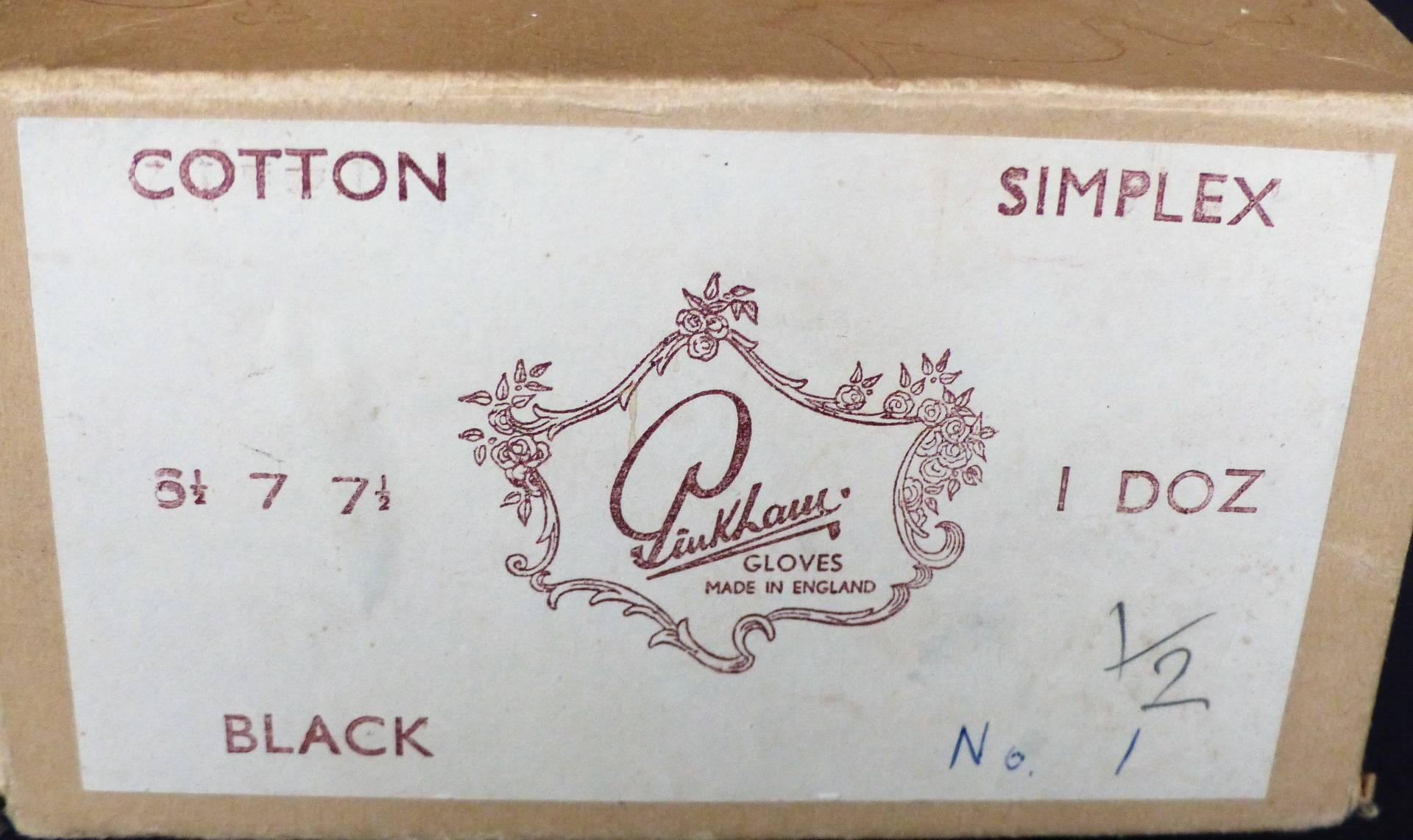
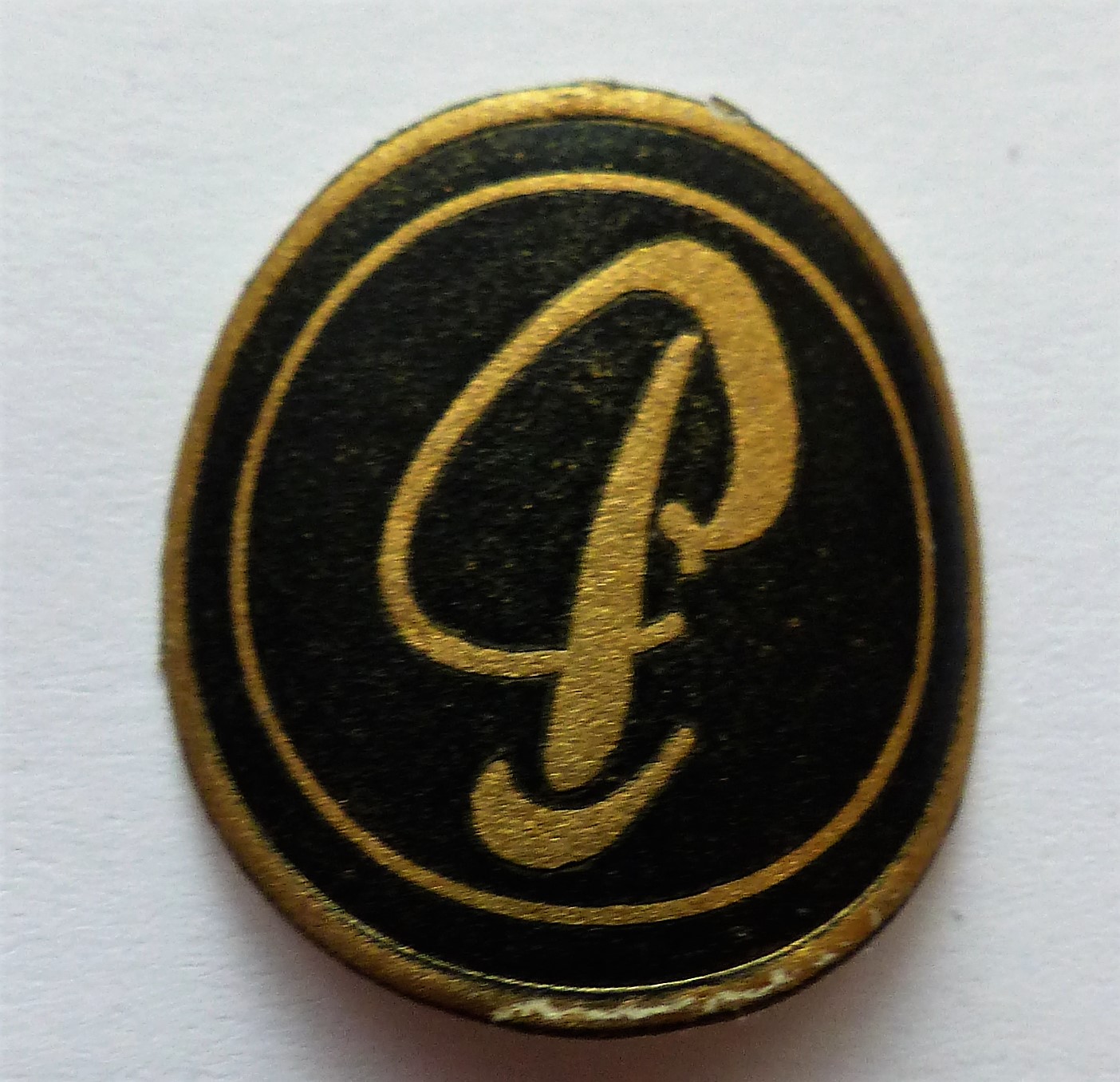
Expensive leather gloves were packed in cream cardboard boxes and sealed with a sticky circular ‘P’
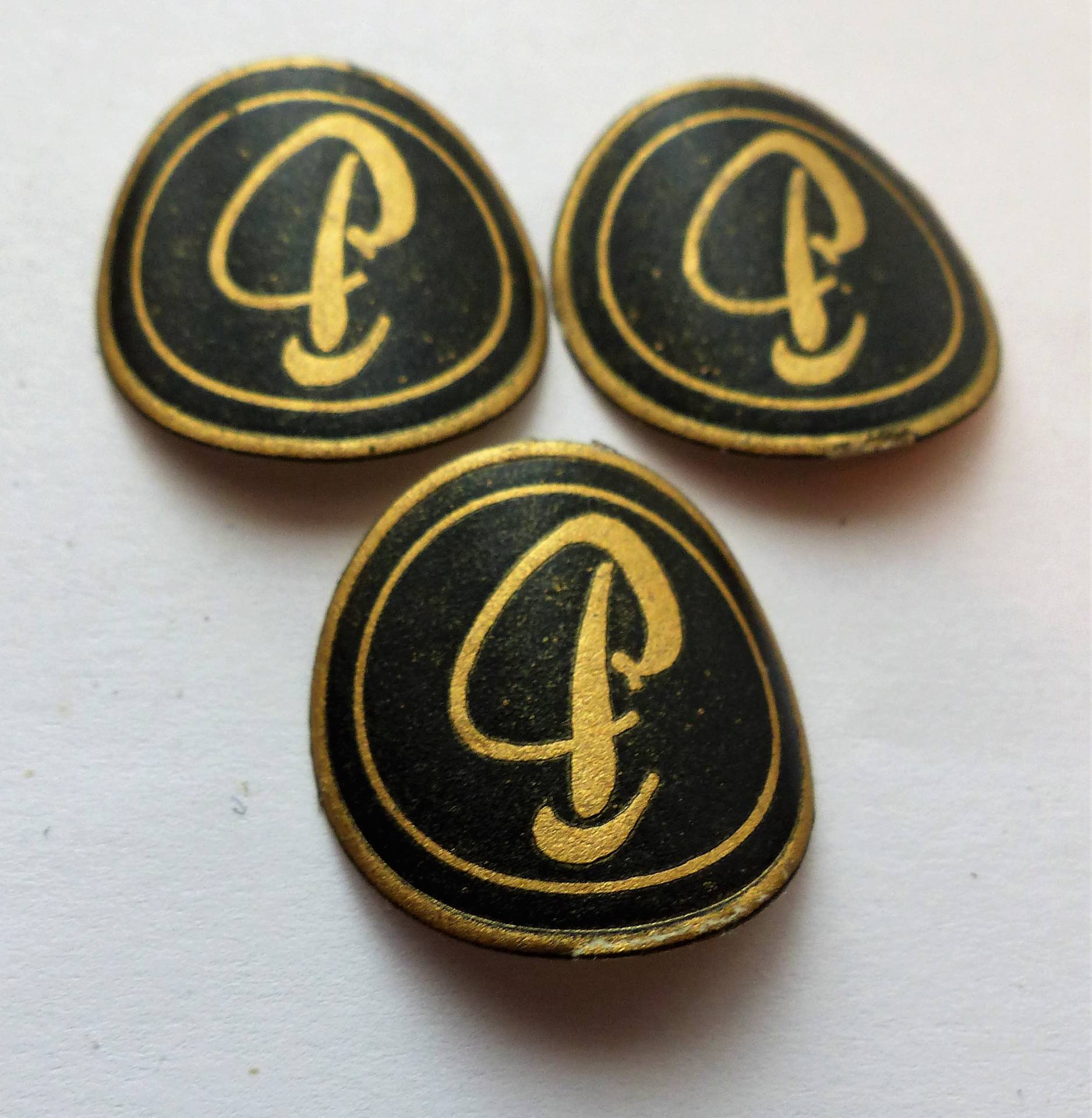
Labels for glove samples
With two new ranges of gloves a year came an enormous task of making samples to show off to prospective buyers at exhibitions and at face to face meetings with retailers.
This part of the company's marketing was critical to the success of each season's ranges. Not seen by the wearers, a paper label was sewn onto the cuff of each sample glove.
Dating from the 1960s below are a number of labels which indicate the style number, the colour availability and the material. On one of the labels the price can be seen; 413 shillings or £20.65 for a dozen pairs of leather gloves. In 2017 one pair of fine English gloves costs upwards of £60.

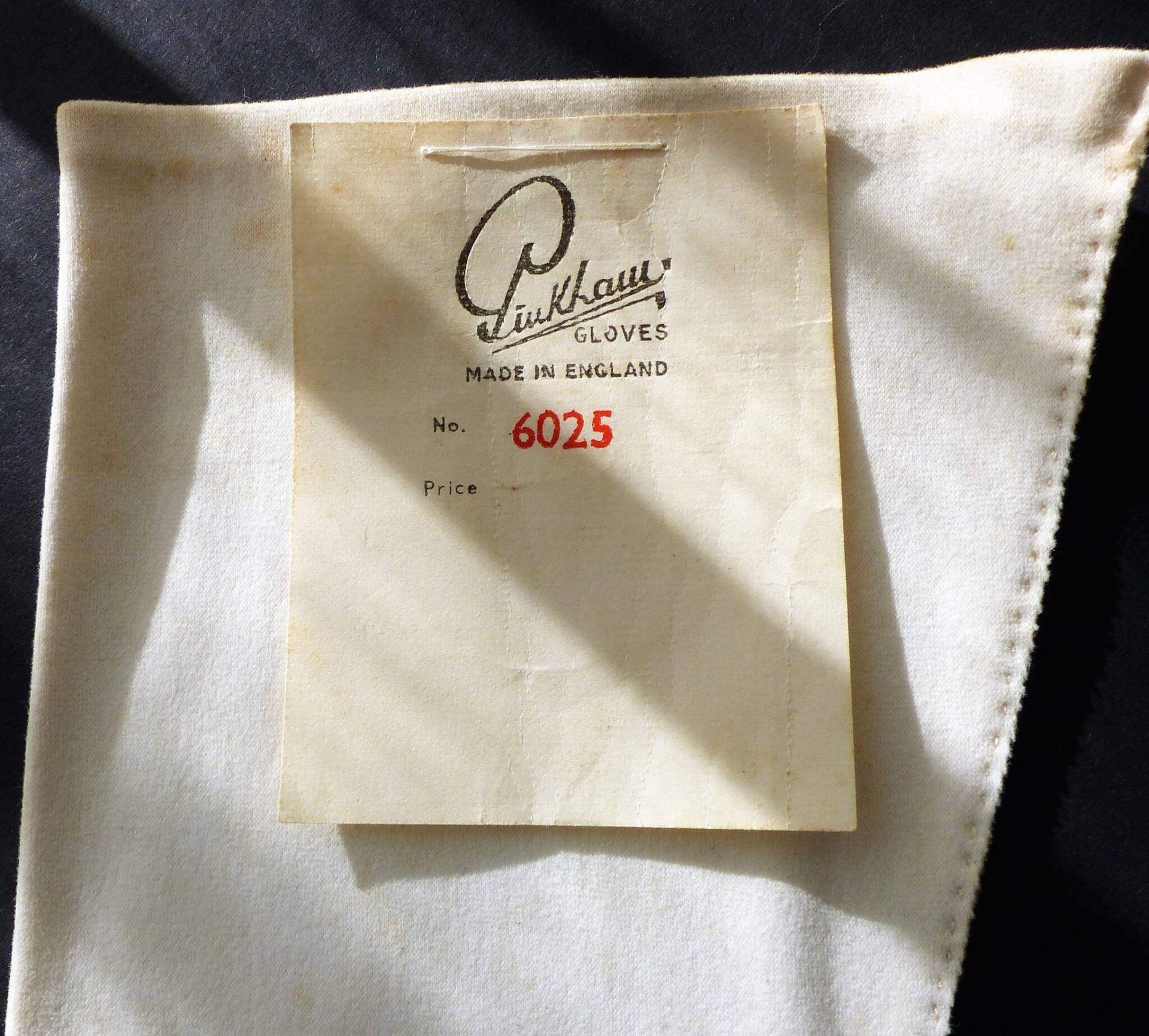
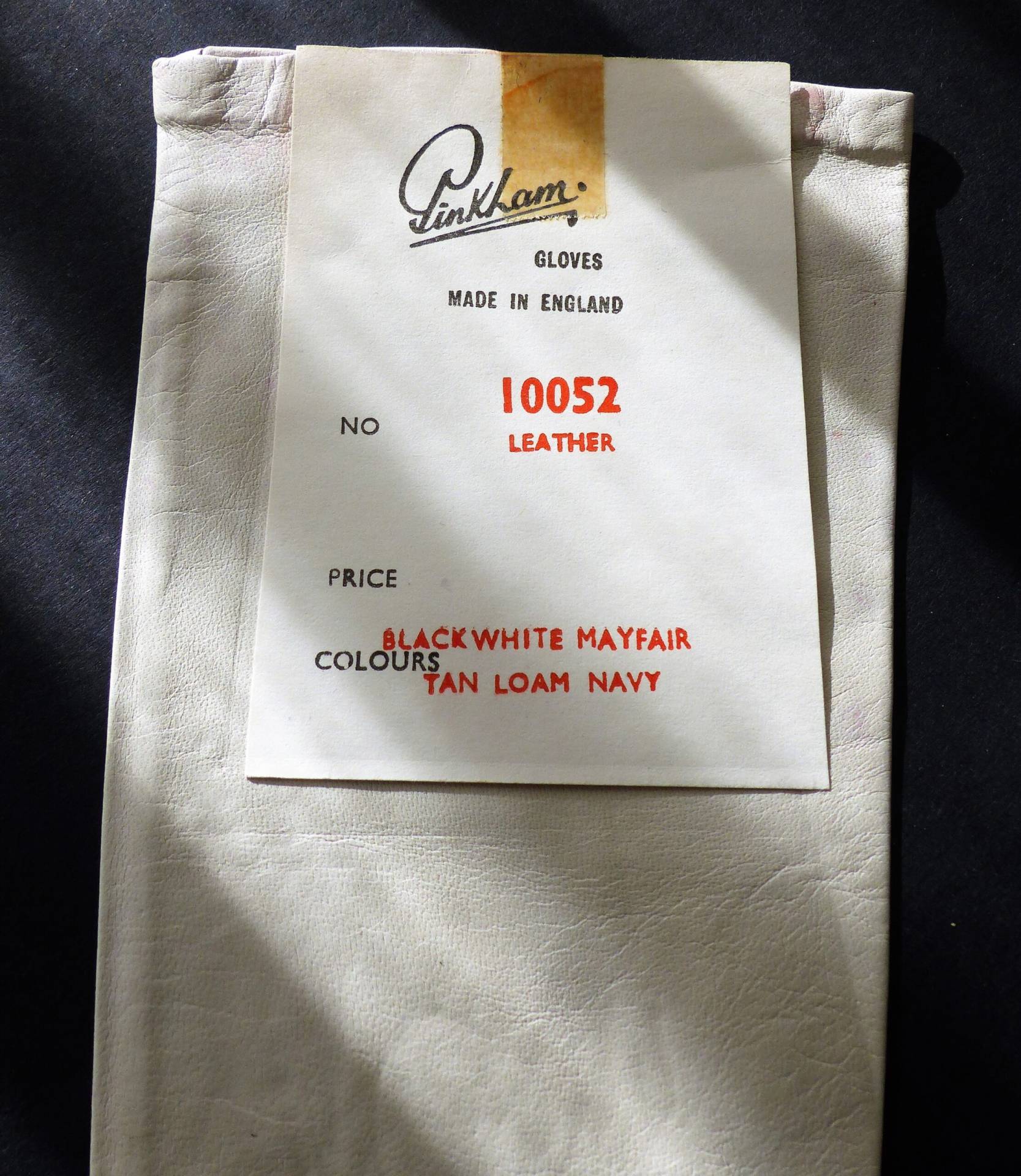
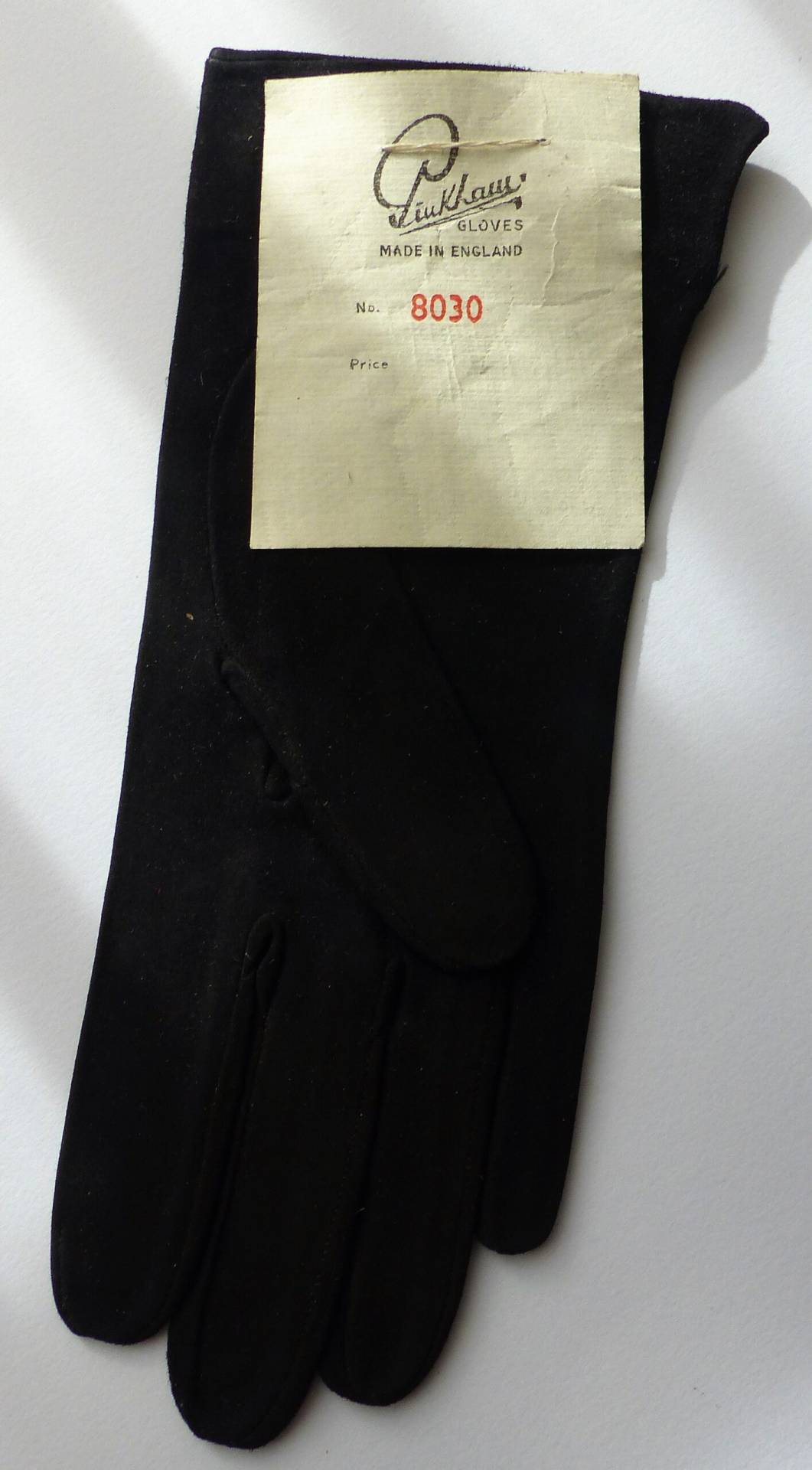
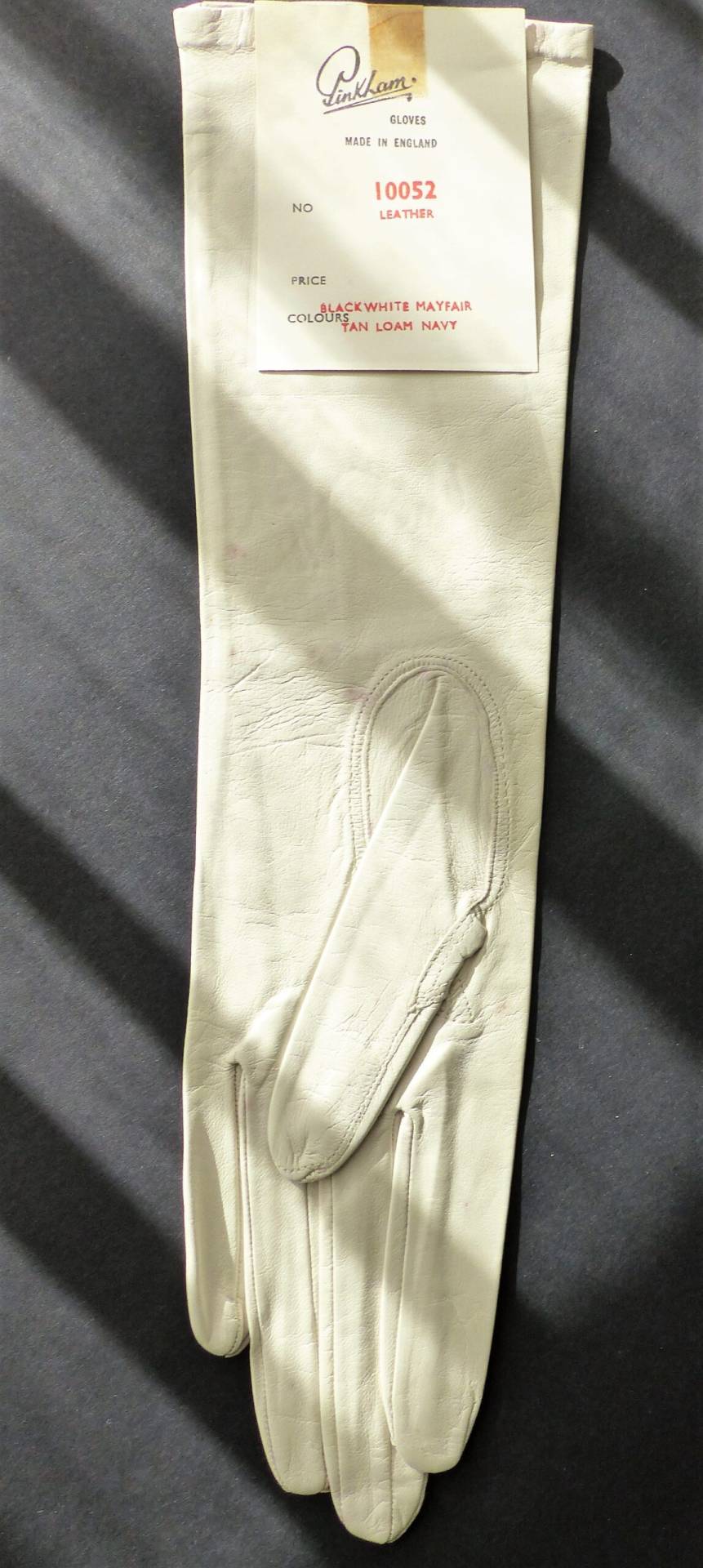
Email your stories of Pinkham Gloves
nickpinkham@pinkhamgloves.co.uk

